| Year Issued |
Dates of Show |
Comments |
Colors |
Scarcity |
Image |
| 1900 |
December 1 - 8
This was the first CILSE (see 1903 calendar, below)
|
NO STAMP, but a nice souvenir pin! |
|
|
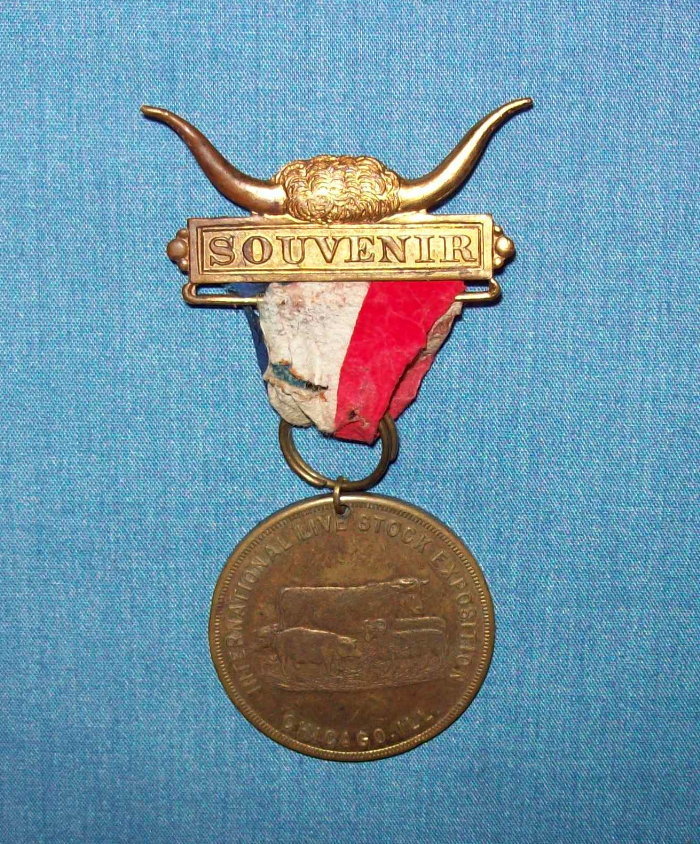

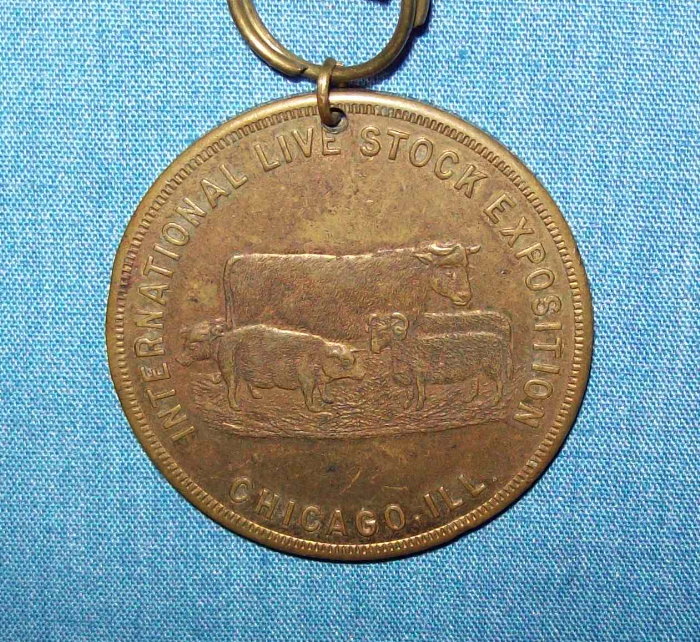

|
| 1901 |
November 30 - December 7
|
NO STAMP, but a poster for the show, plus a poster for
a related convention held at the same time
AND a souvenir medal
|
|
|
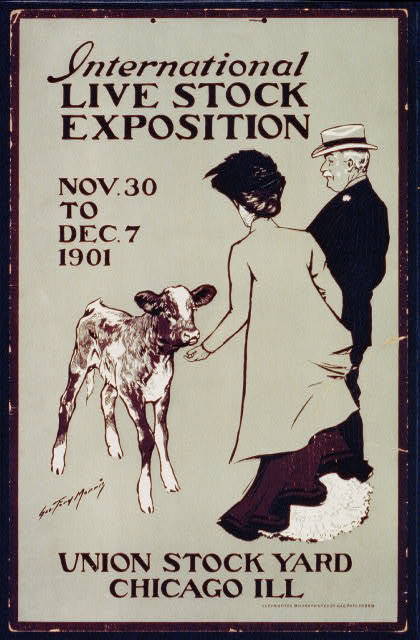
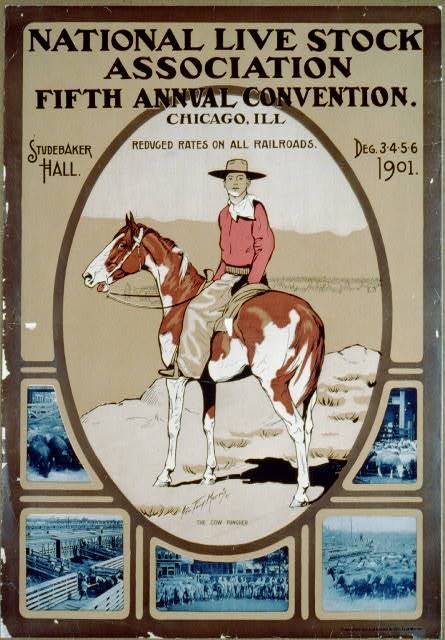
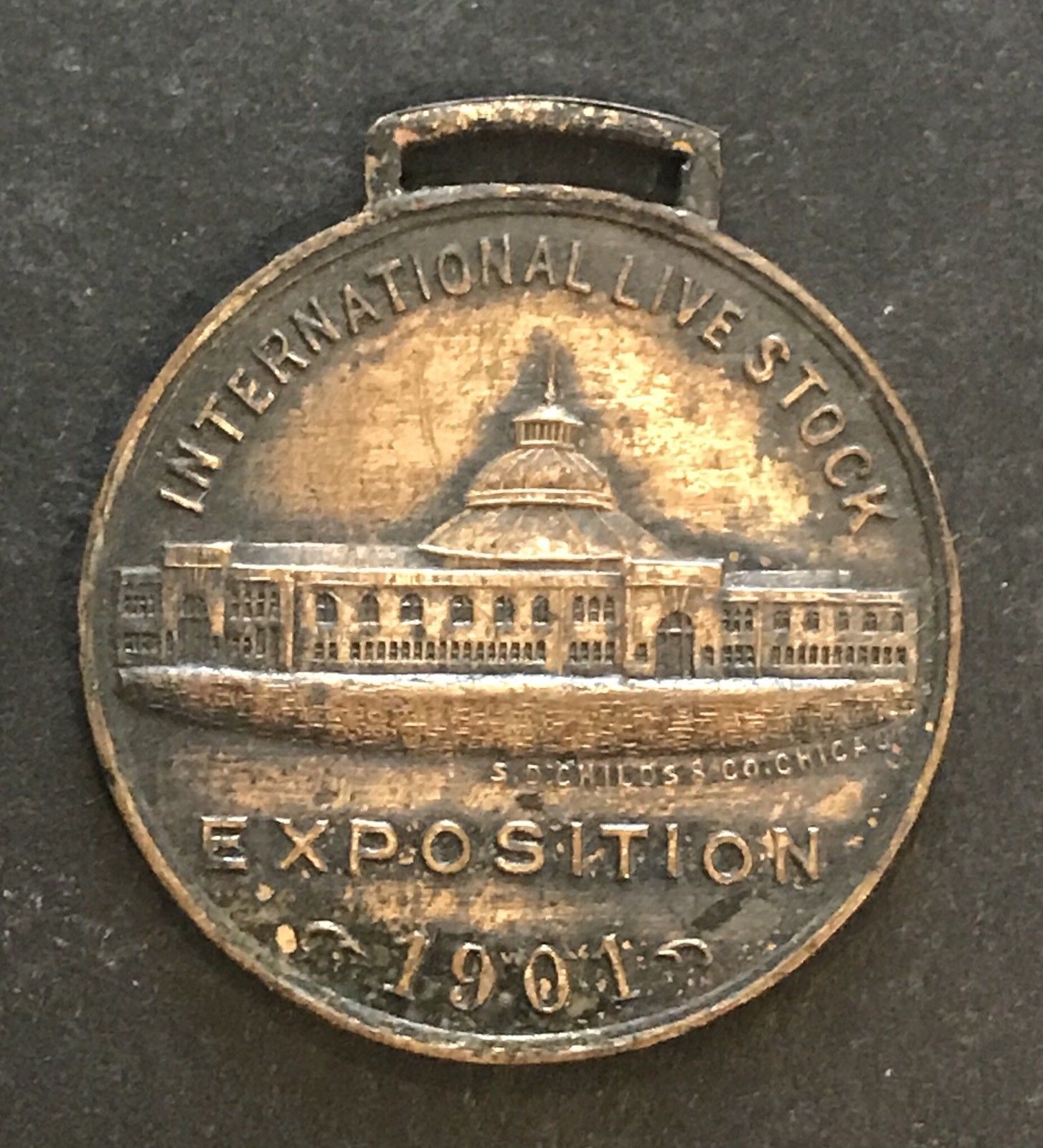
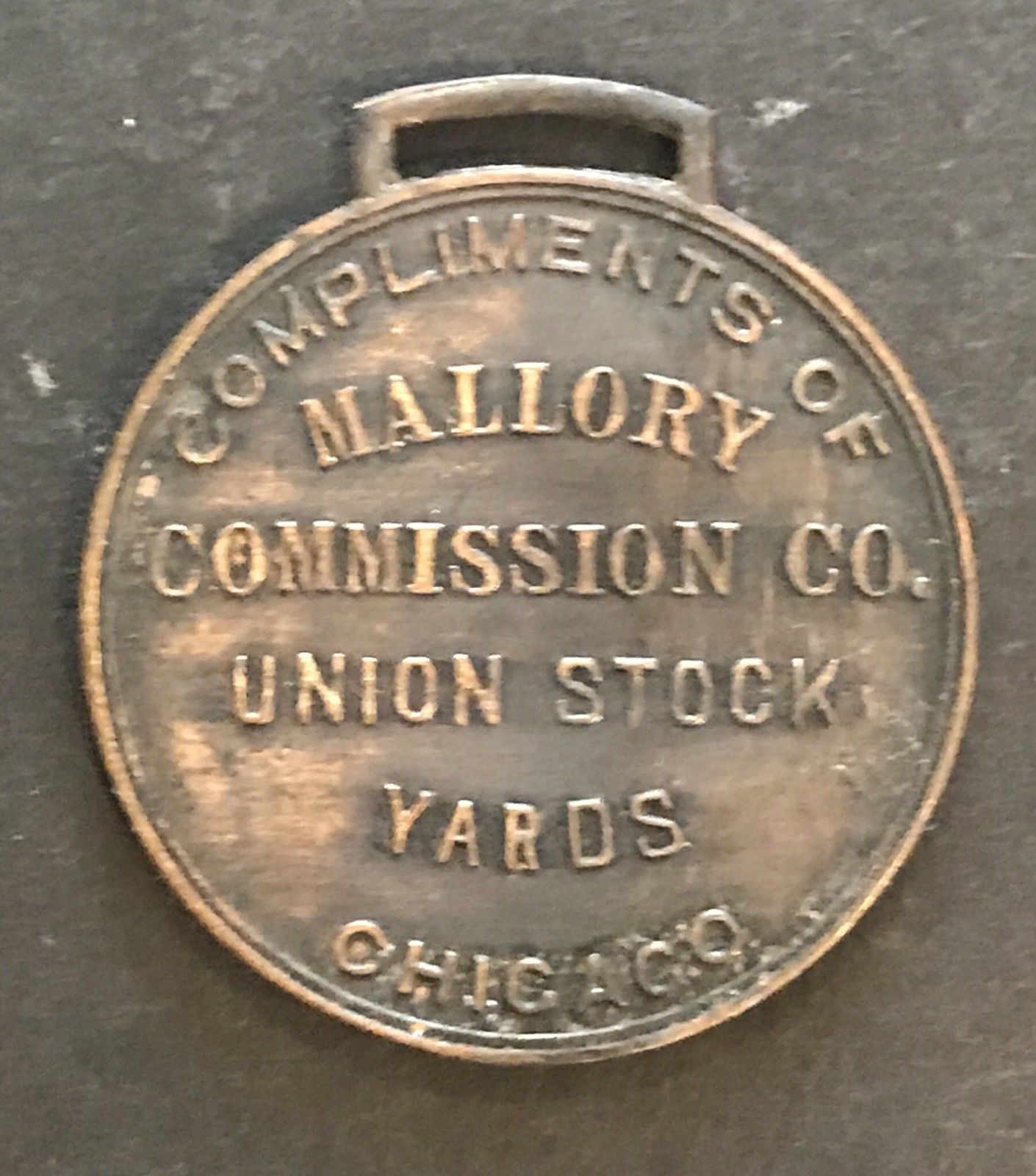
|
| 1903 |
November 28 - December 5 |
NO STAMP, but a calendar and souvenir medal |
|
|
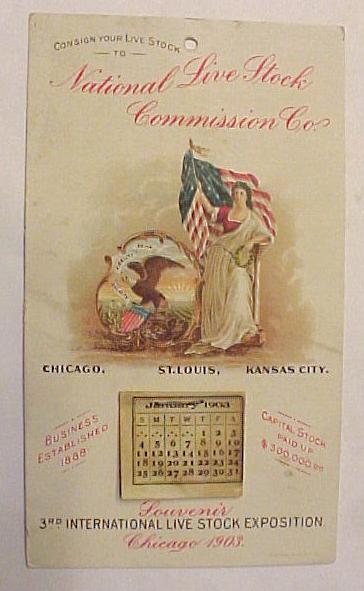
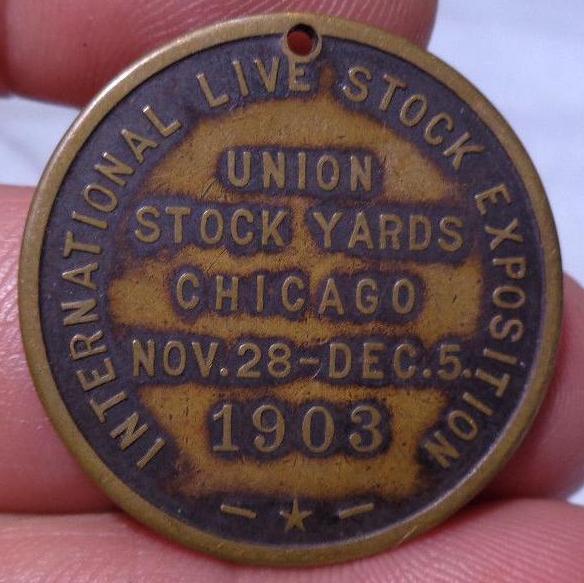

|
| 1904 |
??? |
NO STAMP, but a nice pin |
|
|
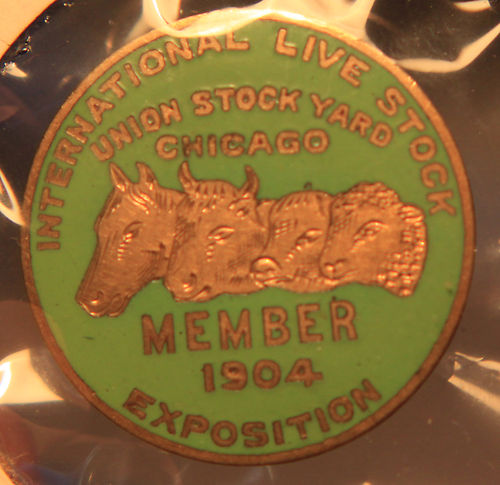
|
| 1905 |
December 16 - 23 |
NO STAMP, but a catalog cover and poster
NOTE the dates - why so late?
|
|
|
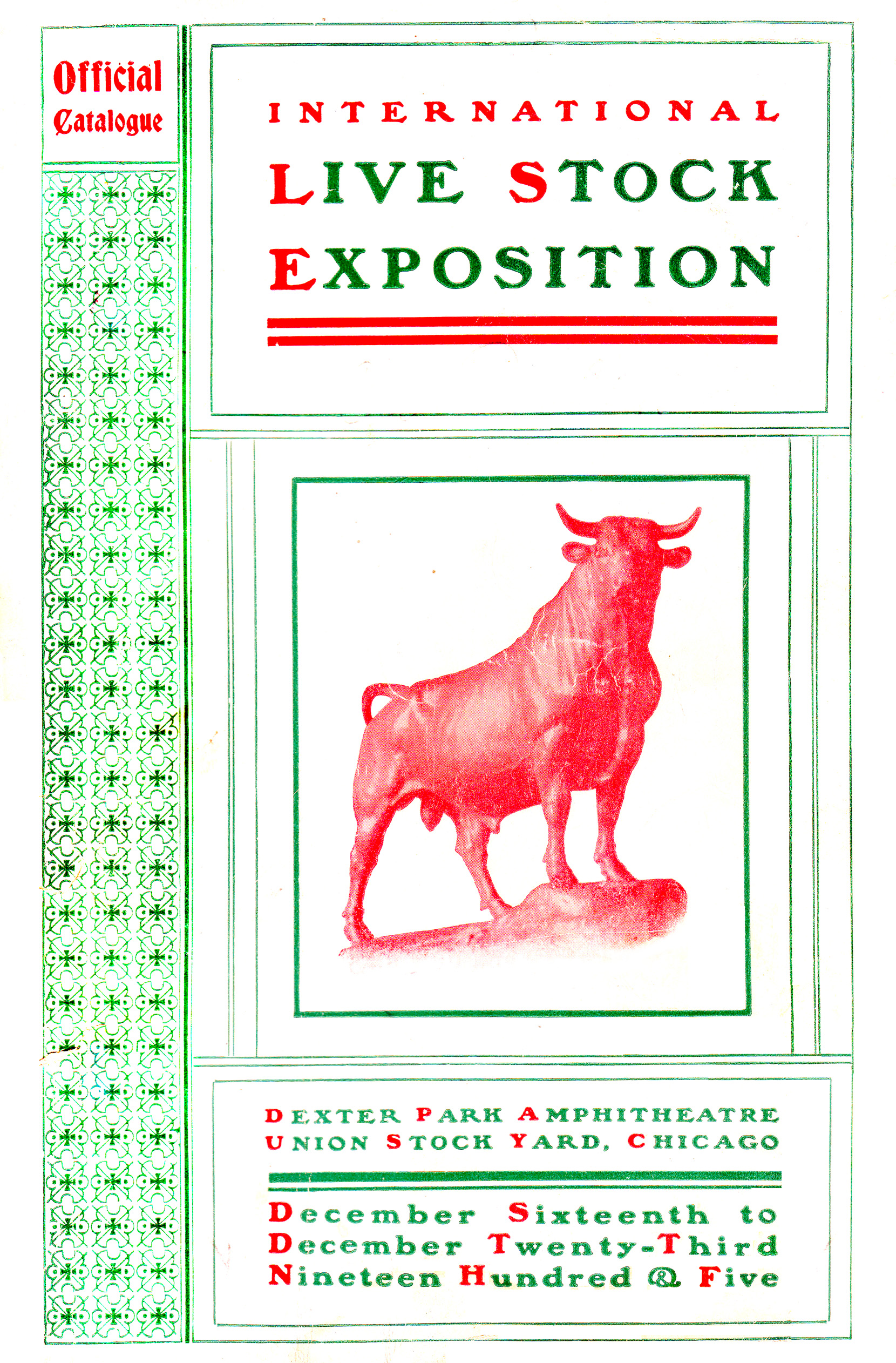

|
| 1907 |
Nov 26(?) to Dec 7 |
|
|
|
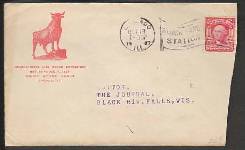
|
| 1908 |
no dates |
|
|
|
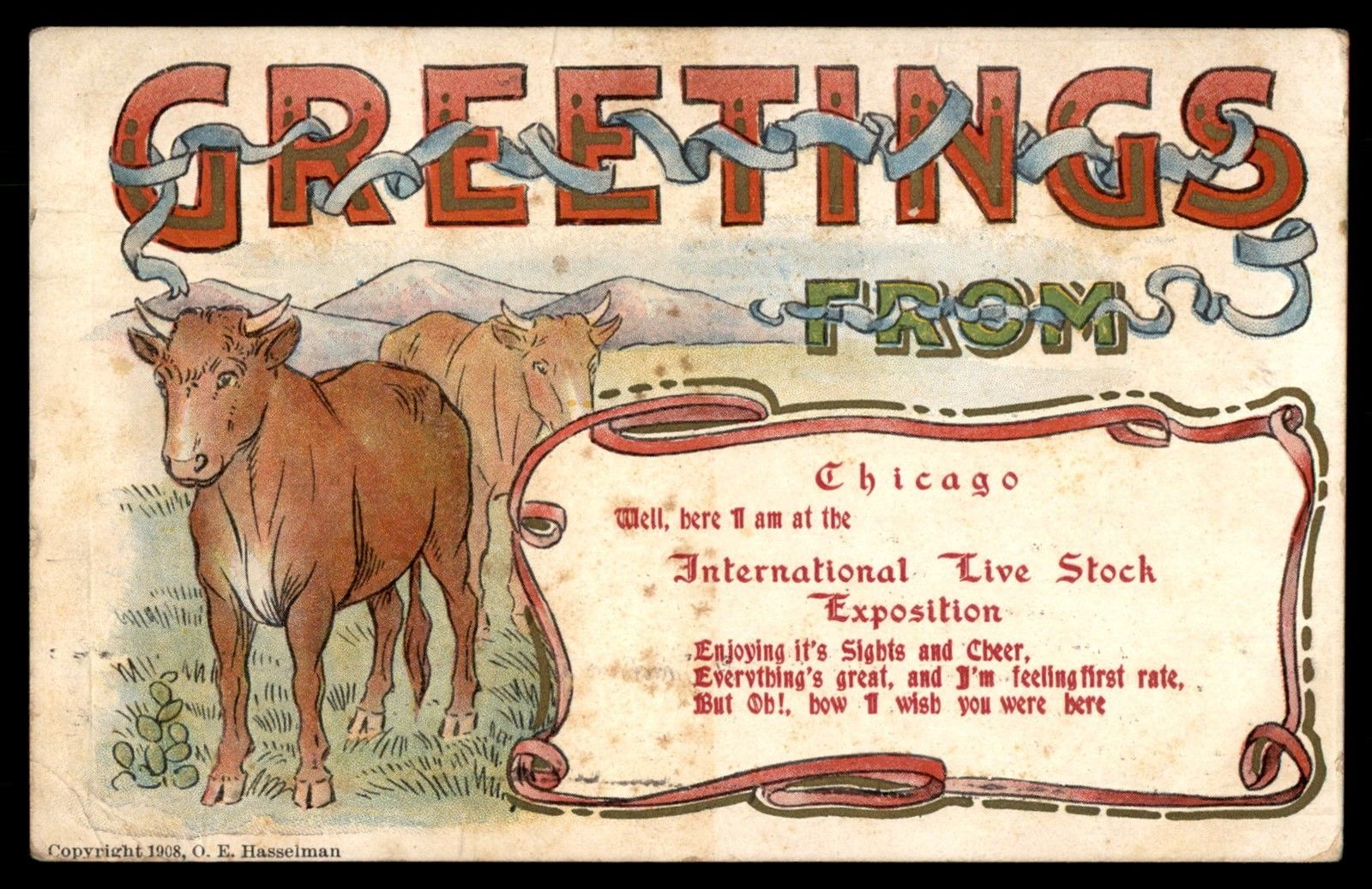

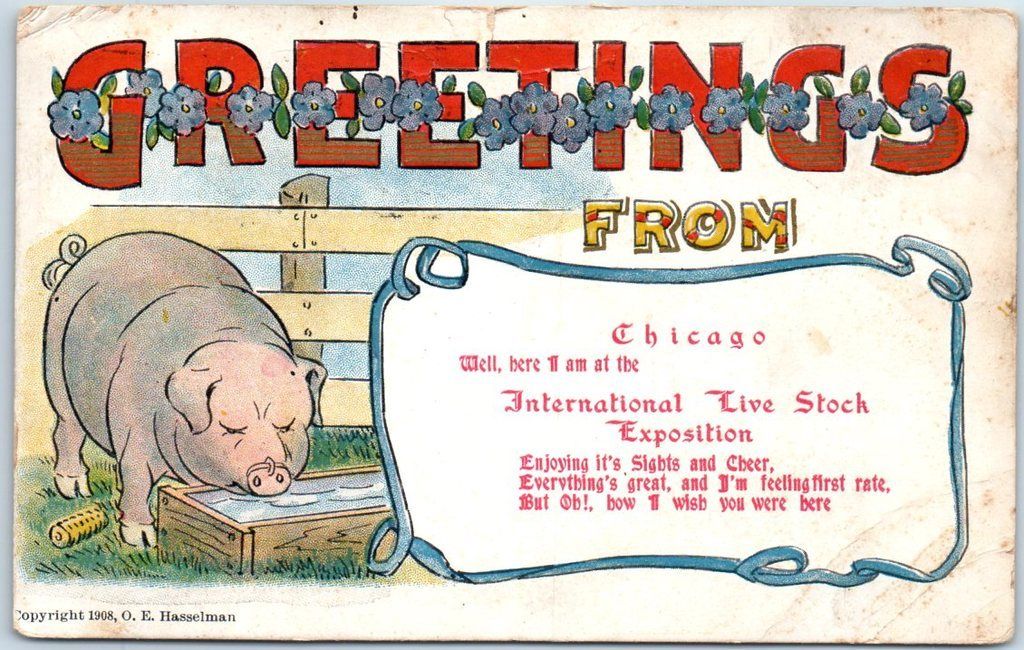
|
| 1909 |
Nov 27 to Dec 10 |
FORERUNNER - Simple text label
|
Red on cream |
rare |

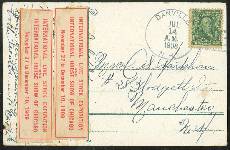 |
| 1910 |
? |
No stamp - nice postcard!
|
|
|
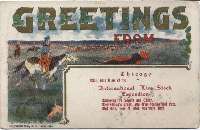
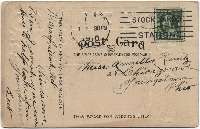 |
| 1912 |
? |
No stamp - nice postcard!
|
|
|
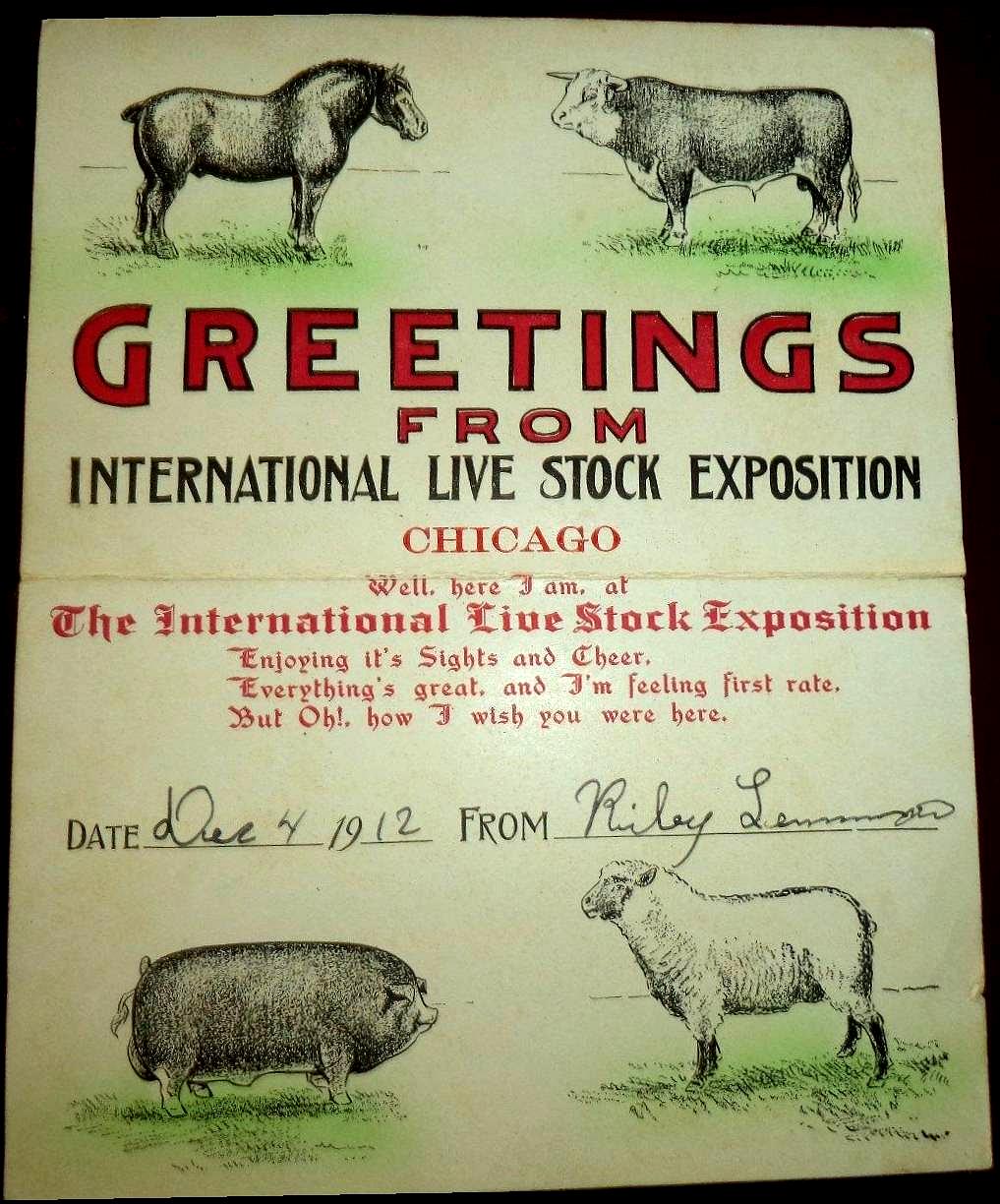
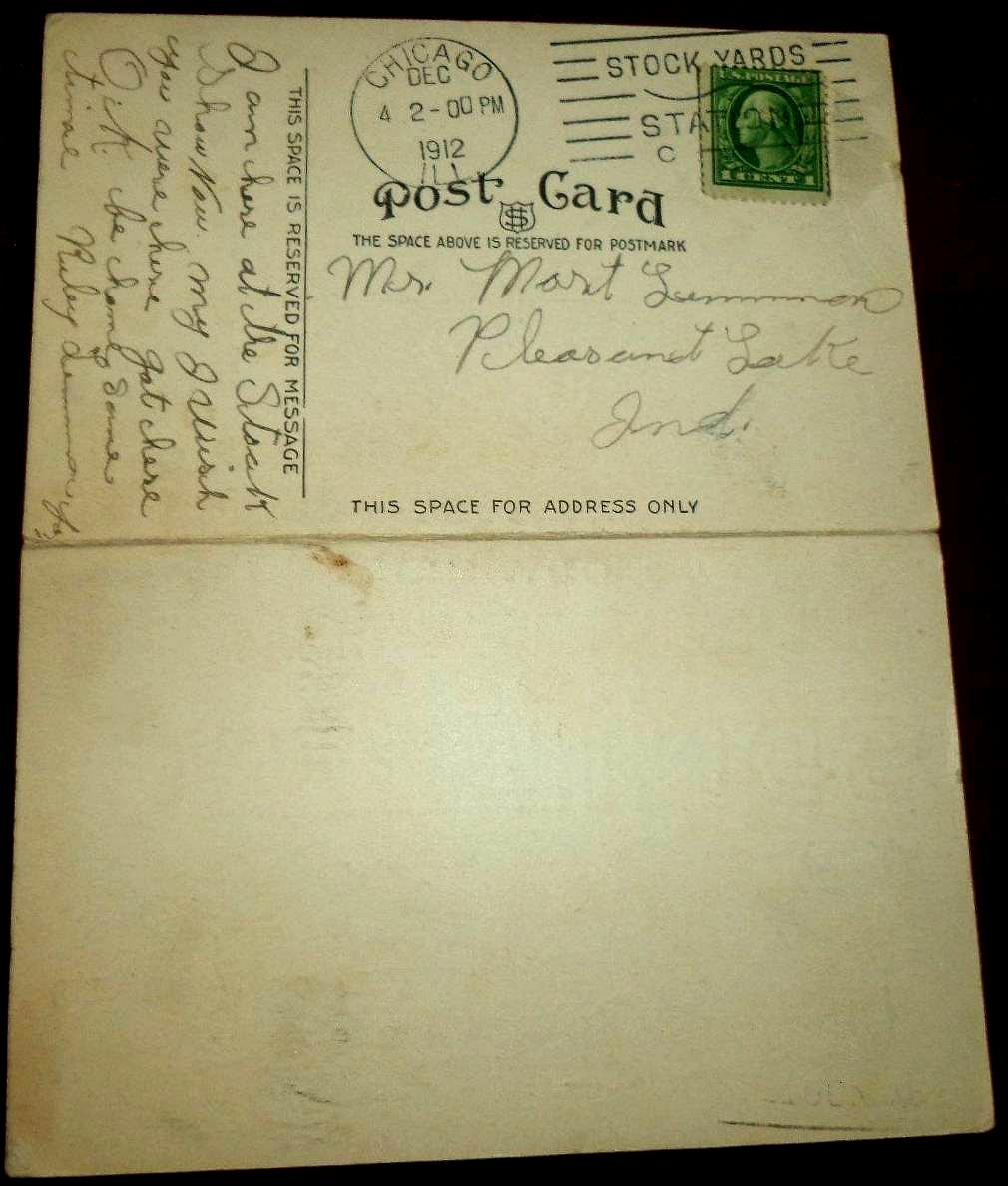 |
| The stamps for years 1913 through 1918 have year
dates. |
| 1913 |
Nov 29 to Dec 6, 1913 |
Oval design in green, woman on horseback holding crowns, ox head
to left, sheep's head to right
|
green |
rare |

|
| 1914 |
Nov 28 to Dec 5, 1914 |
Image of farmer and bull
According to article quoted at bottom of page, the show was planned but
not
held in 1914, because of an
outbreak of hoof-and-mouth disease |
brown |
very
scarce |
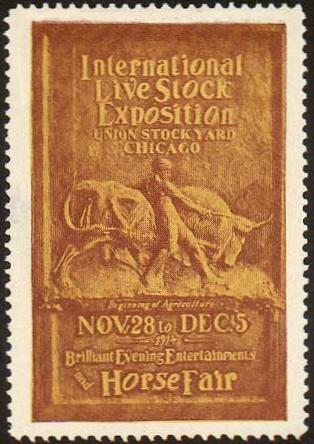
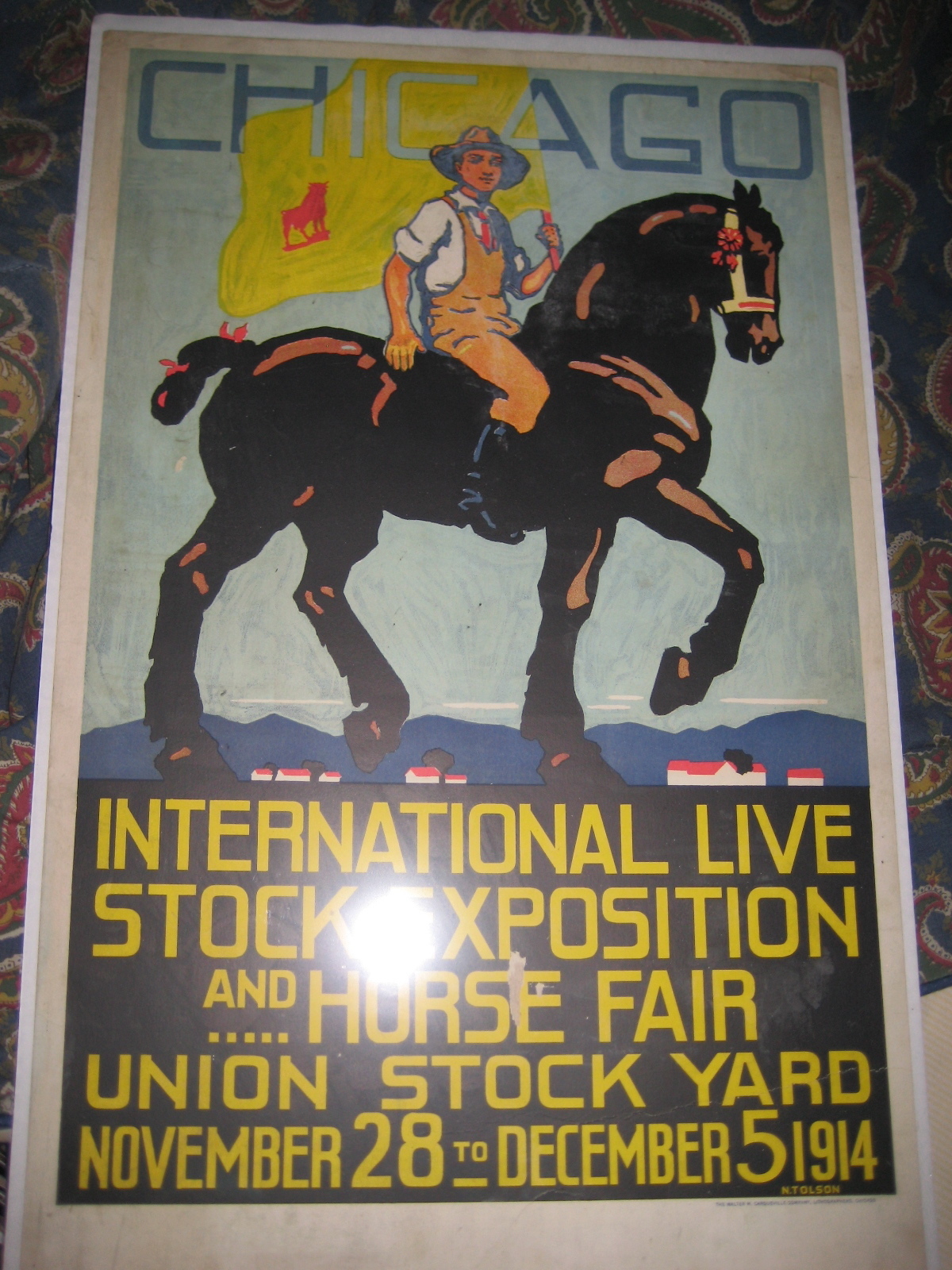
Stamp and poster
Note that the poster already
uses the design of farmer on horseback, adopted two years later for the stamp as well.
|
| 1915 |
Nov 27 to Dec 4, 1915 |
Image of sheep
|
yellow, red, blue and black |
very scarce |


(Progressive color proofs!) |
| 1916 |
Dec 2-9, 1916 |
Rider on horseback holding flag with solid image of bull - this same basic design was used for all subsequent stamps |
blue and black |
scarce |
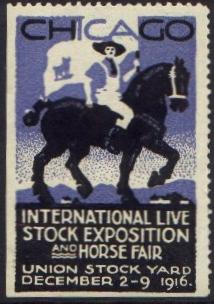
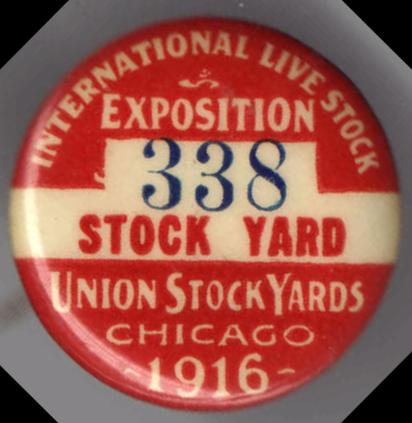
|
| 1917 |
Dec 1-8, 1917 |
|
red, blue and black |
scarce
|

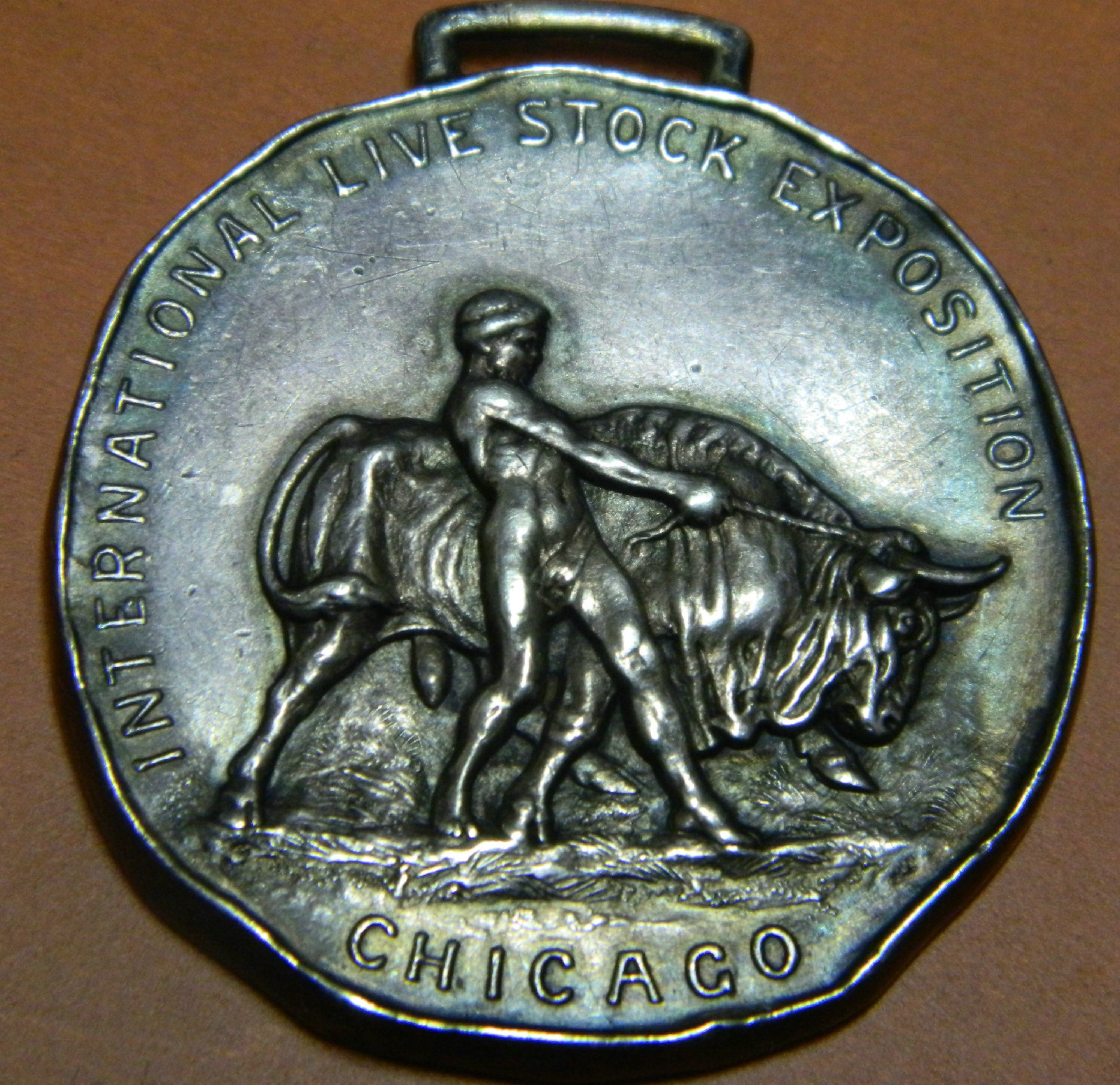
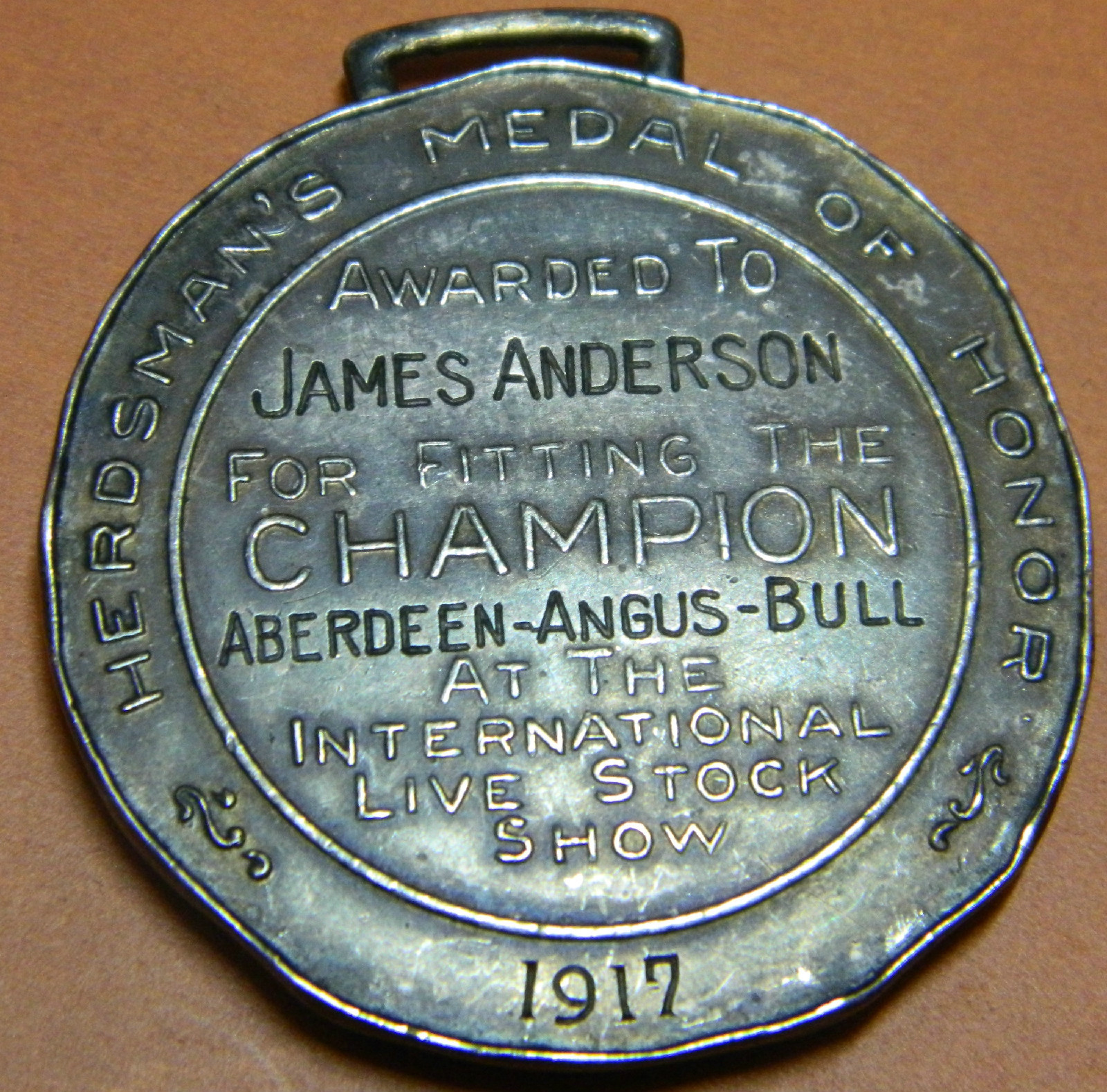
Stamp and souvenir medal
Note that the design on the medal is the same as that used
on the stamp for 1914 - and I am surprised how risqué it is,
for the times.
|
| 1918 |
Nov 30 to Dec 7, 1918 |
|
red and blue |
|
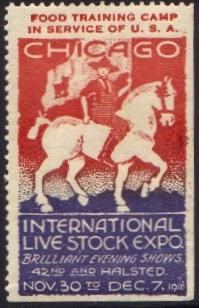
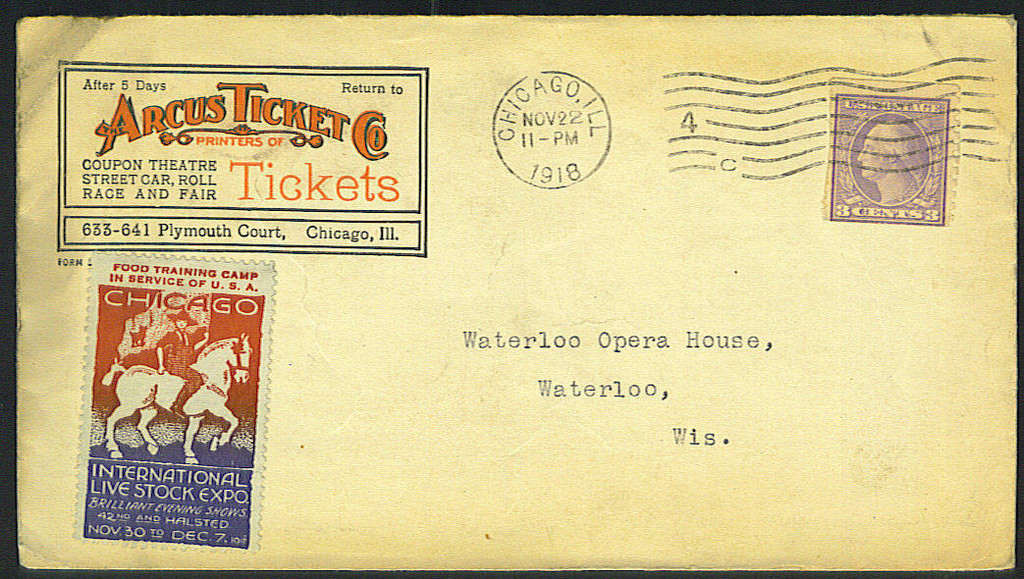
|
| The stamps for years 1919 through
1933 have no year dates, nor do I have a record of the dates of
the show for each year, but since all of the
shows from 1913 through 1918, plus 1934 are
Saturday to Saturday, it seems reasonable to assume the shows for 1919 through
1933 spanned those days as well. That is the basis for
assignment of stamps to years in the next section.
|
| 1919 |
Nov 29 to Dec 6 |
The dates for 1919 and 1924 are the same, and while there are two different
stamps
with those dates, neither has a year date, so
I can only guess which of those two stamps was issued which year.
Their colors are basically the same - I have seen some differences, but
I think those are from printing variations and age - so the only valid
distinction is the text: One says "UNION STOCK YARDS" at the bottom, and
the other says "42nd and HALSTED."
The stamps for 1918, 1920, and 1921 all say "42nd and HALSTED," so I am assuming
for consistency the stamp for 1919 would have that text as well.
Therefore the stamp with "UNION STOCK YARDS" must be from 1924.
If someone can prove otherwise, please email the webmaster - see bottom of page.
|
red and blue |
|
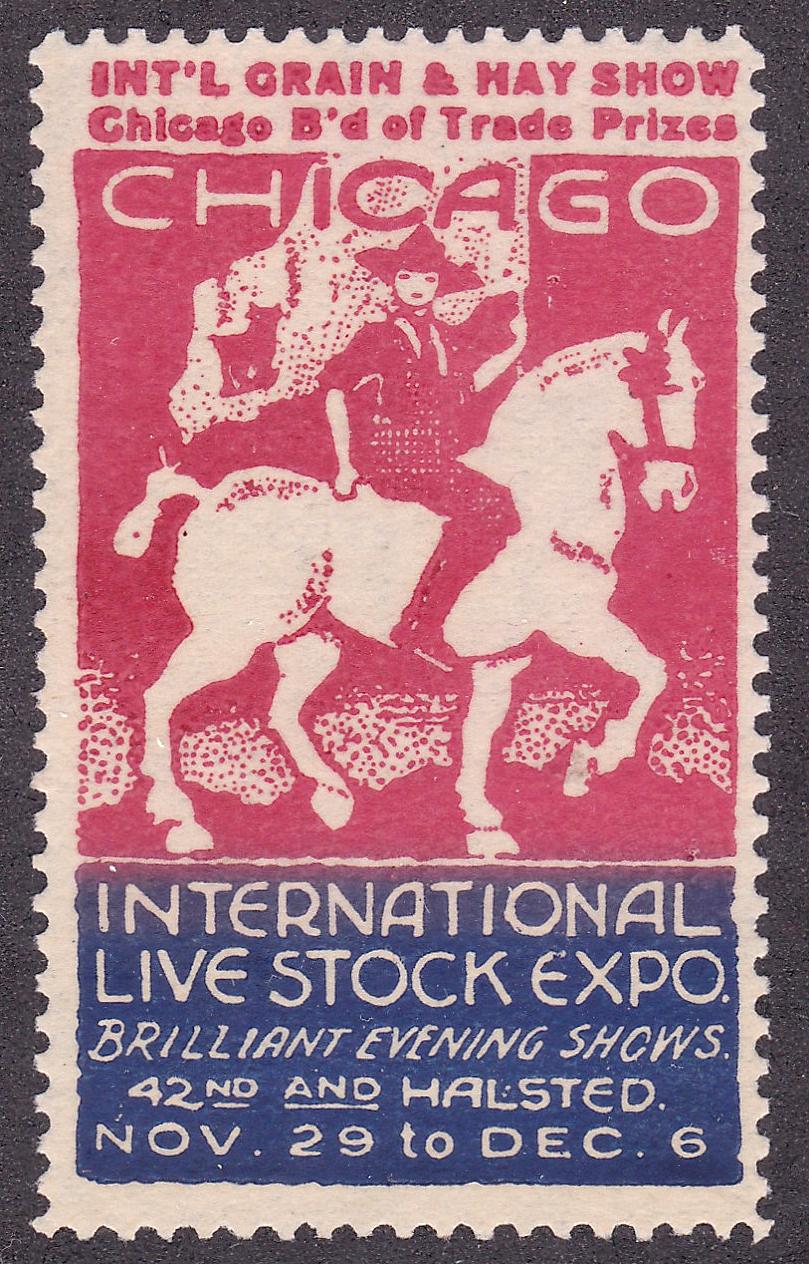
|
| 1920 |
Nov 27 to Dec 4 |
|
" |
|
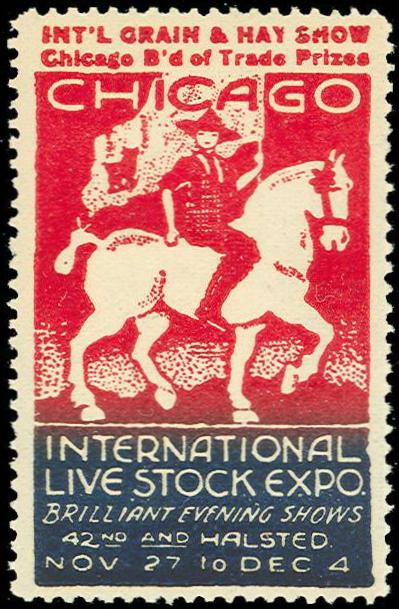 |
| 1921 |
Nov 26 to Dec 3 |
|
" |
|
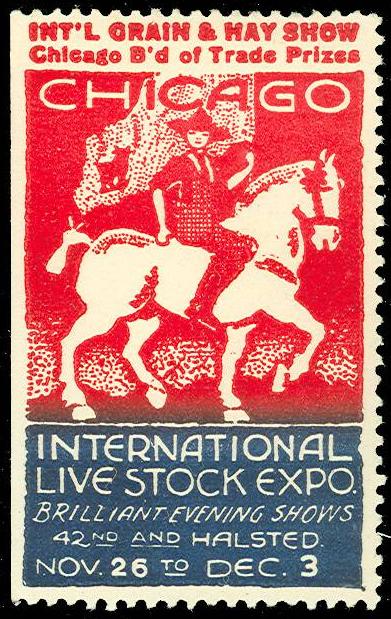 |
| 1922 |
Dec 2 to 9, 1922 |
No Stamp?
|
x |
|
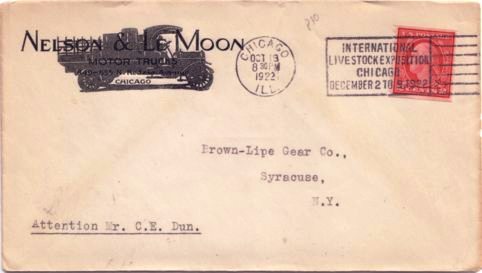
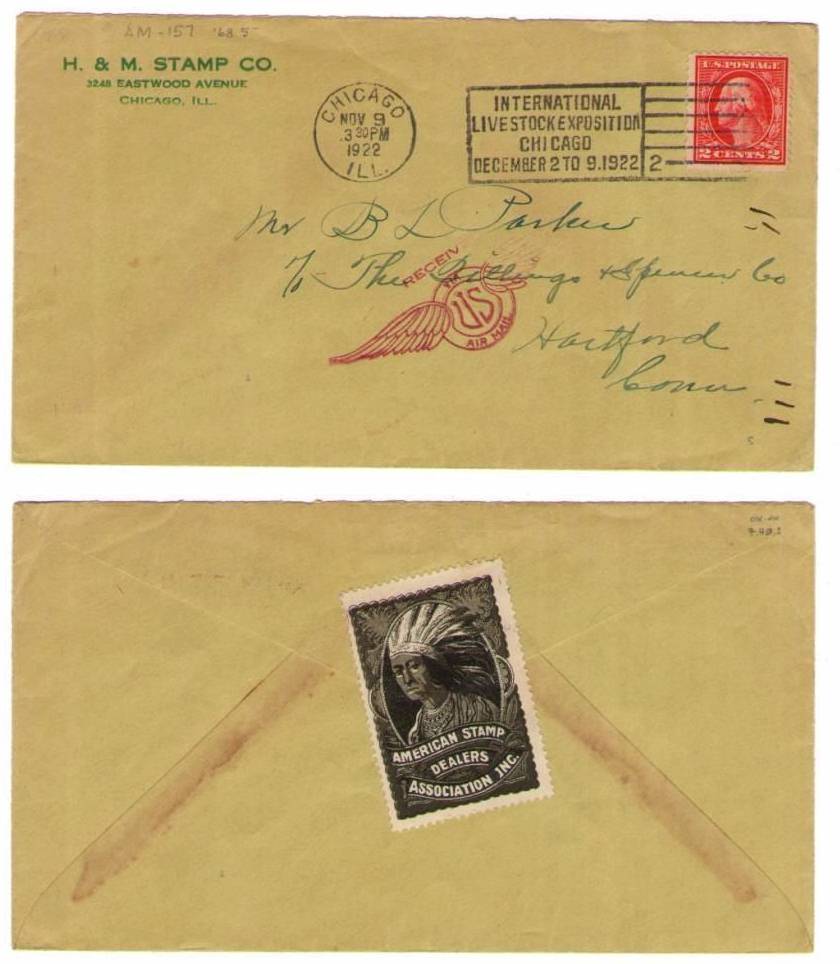
Nice ASDA Cinderella!


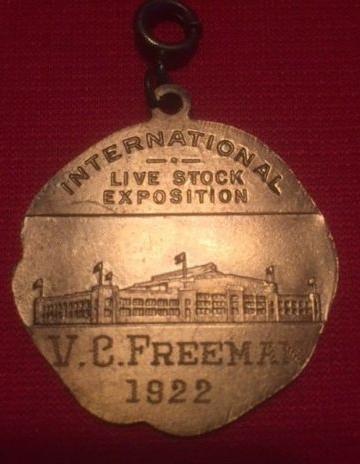
|
| 1923 |
Dec 1 to 8, 1923 |
No Stamp?
|
x |
|

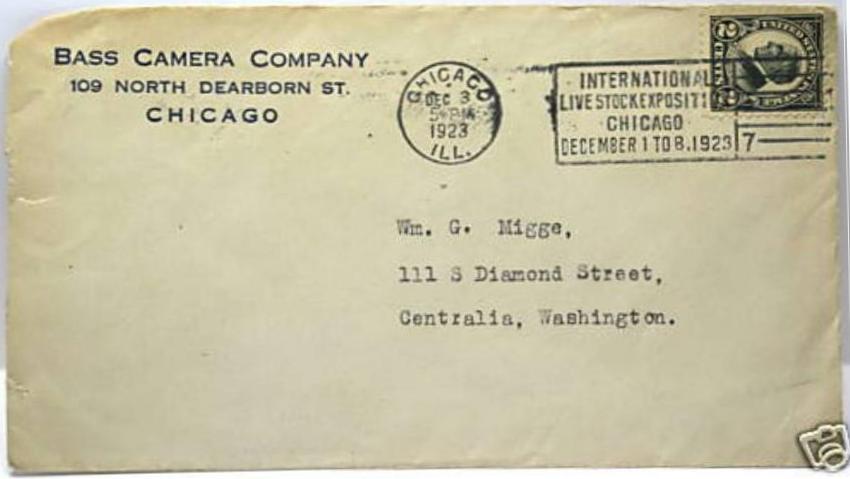
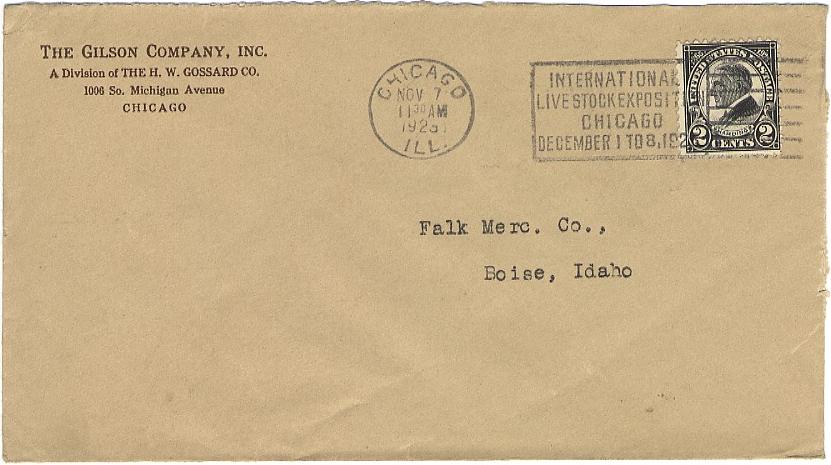
|
| 1924 |
Nov 29 to Dec 6
25th Anniversary!
|
The dates for 1919 and 1924 are the same, and while there are two different
stamps
with those dates, neither has a year date, so
I can only guess which of those two stamps was issued which year.
Their colors are basically the same - I have seen some differences, but
I think those are from printing variations and age - so the only valid
distinction is the text: One says "UNION STOCK YARDS" at the bottom, and
the other says "42nd and HALSTED."
The stamps for 1918, 1920, and 1921 all say "42nd and HALSTED," so I am assuming
for consistency the stamp for 1919 would have that text as well.
Therefore the stamp with "UNION STOCK YARDS" must be from 1924.
If someone can prove otherwise, please email the webmaster - see bottom of page.
|
red and blue |
|
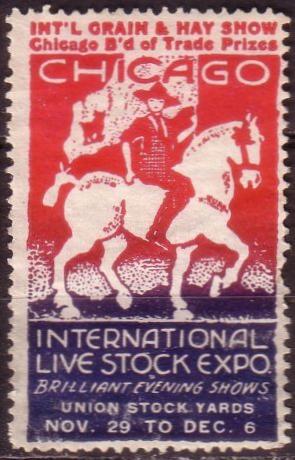
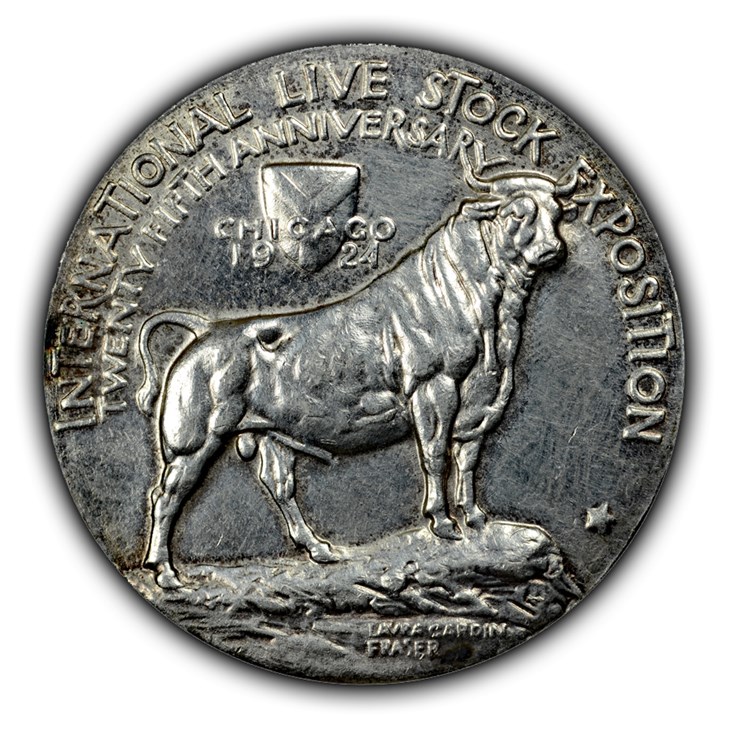
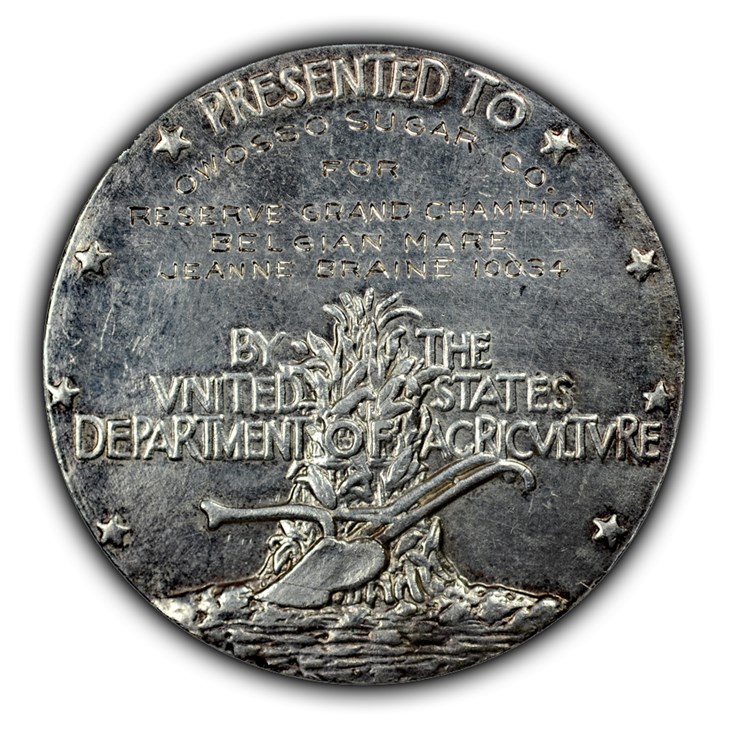
|
| 1925 |
Nov 28 to Dec 5 |
|
black, blue-gray and tan |
|
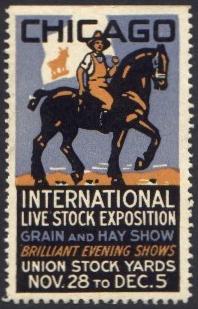 |
| 1926 |
Nov 27 to Dec 4 |
|
" |
|
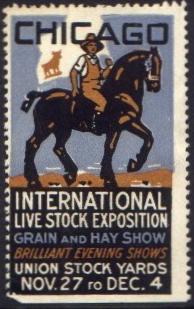 |
| 1927 |
Nov 26 to Dec 3 |
|
" |
|
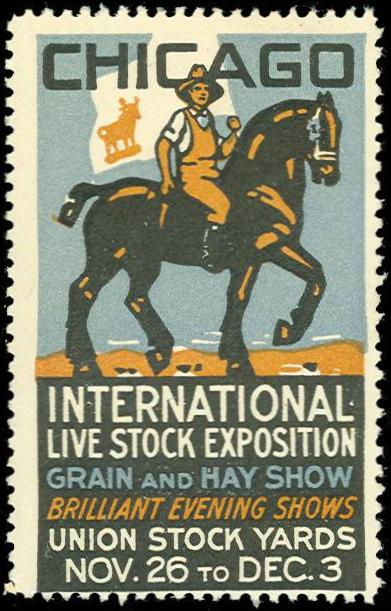
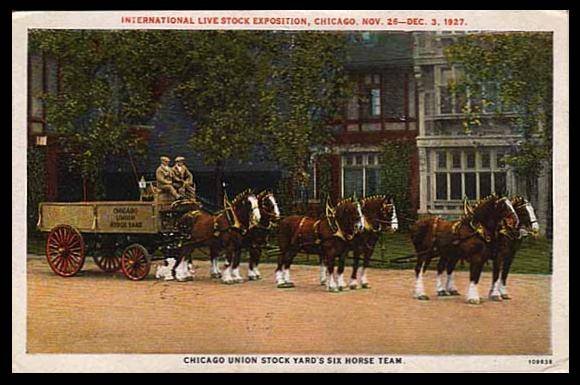
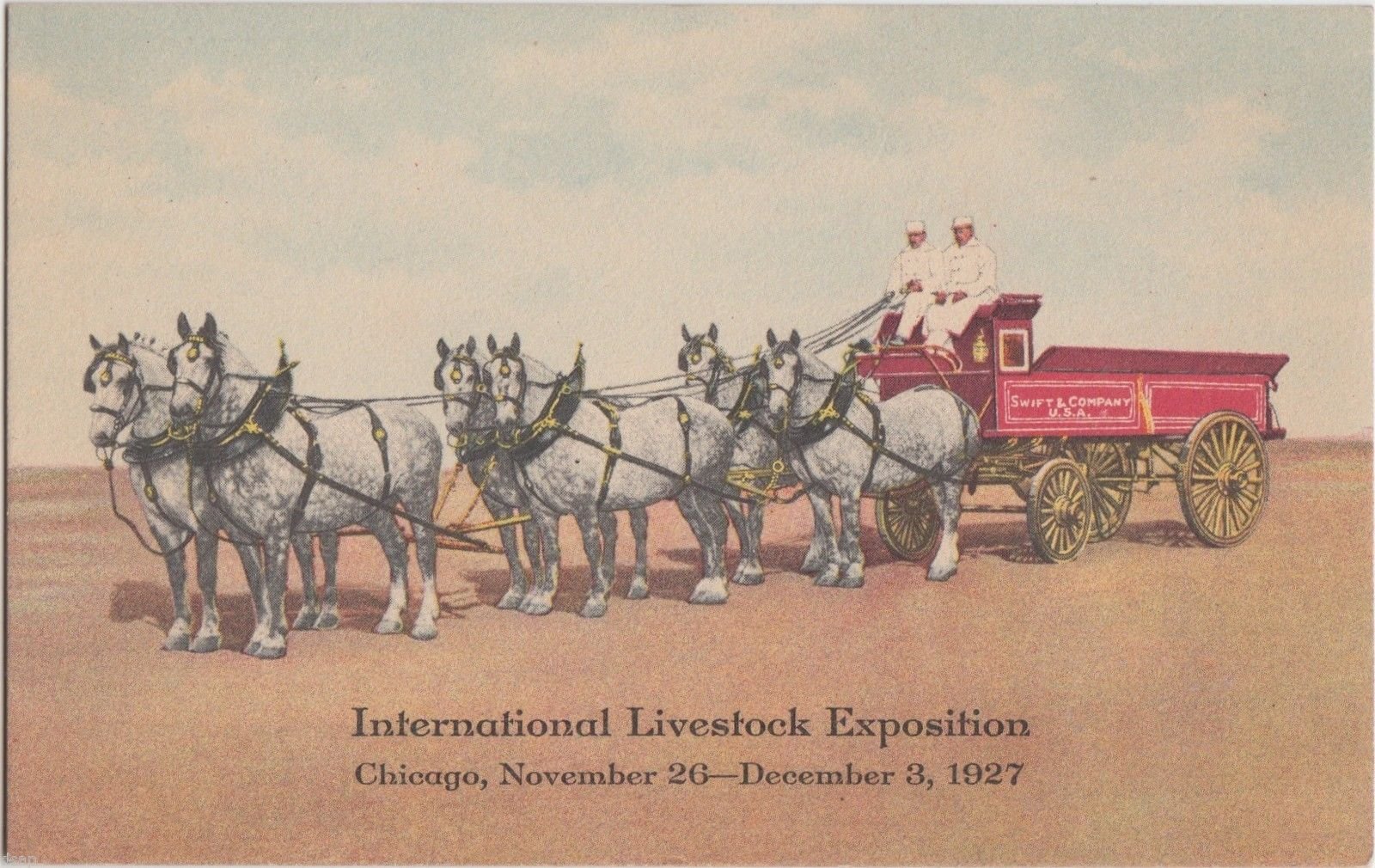
|
| 1928 |
Dec 1 to Dec 8 |
|
" |
|

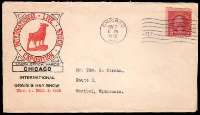
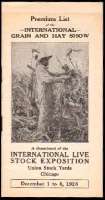
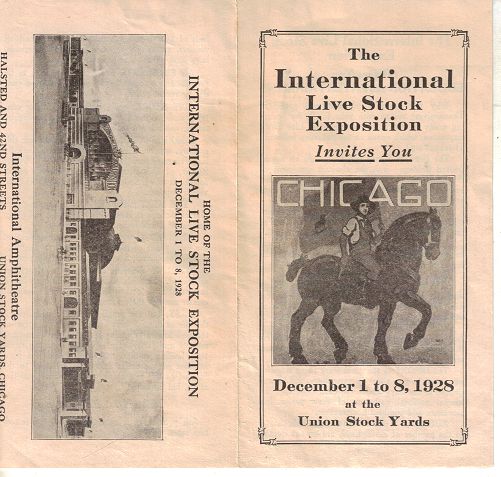
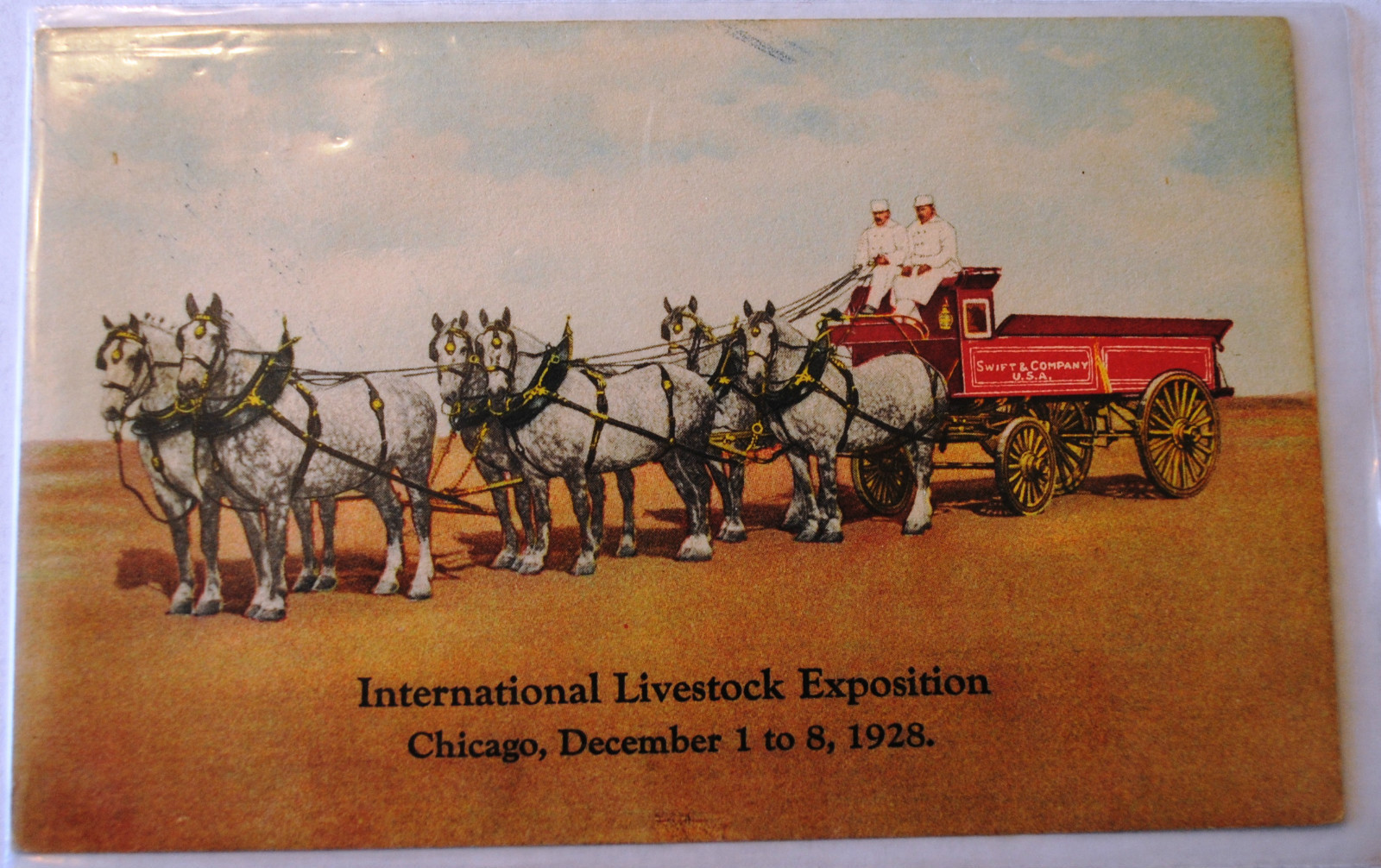
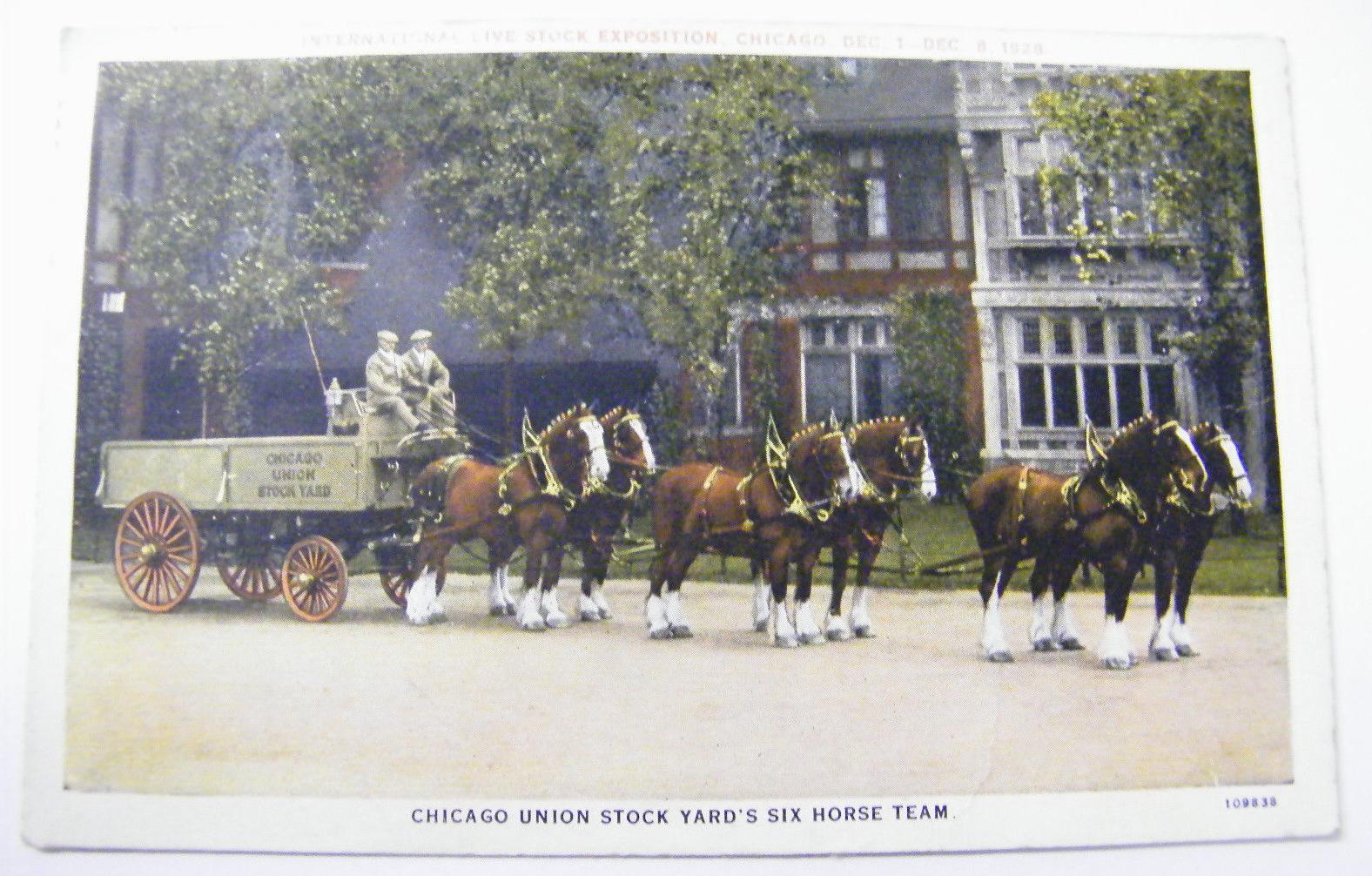
|
| 1929 |
Nov 30 to Dec 7 |
Bull on flag is outlined, not solid |
"
|
|
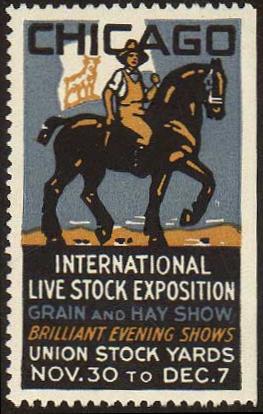
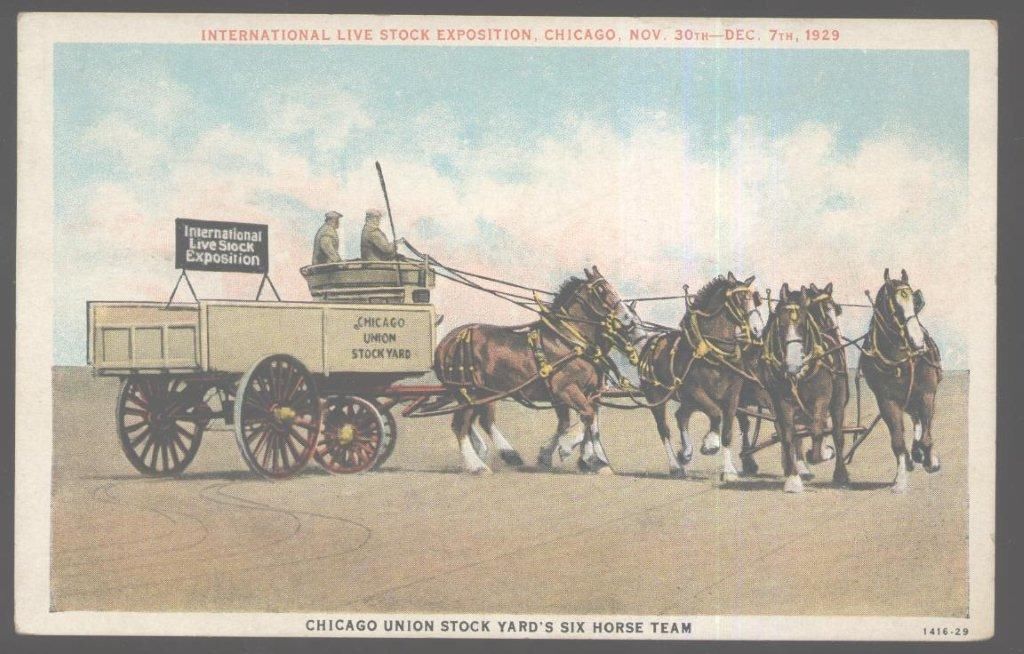
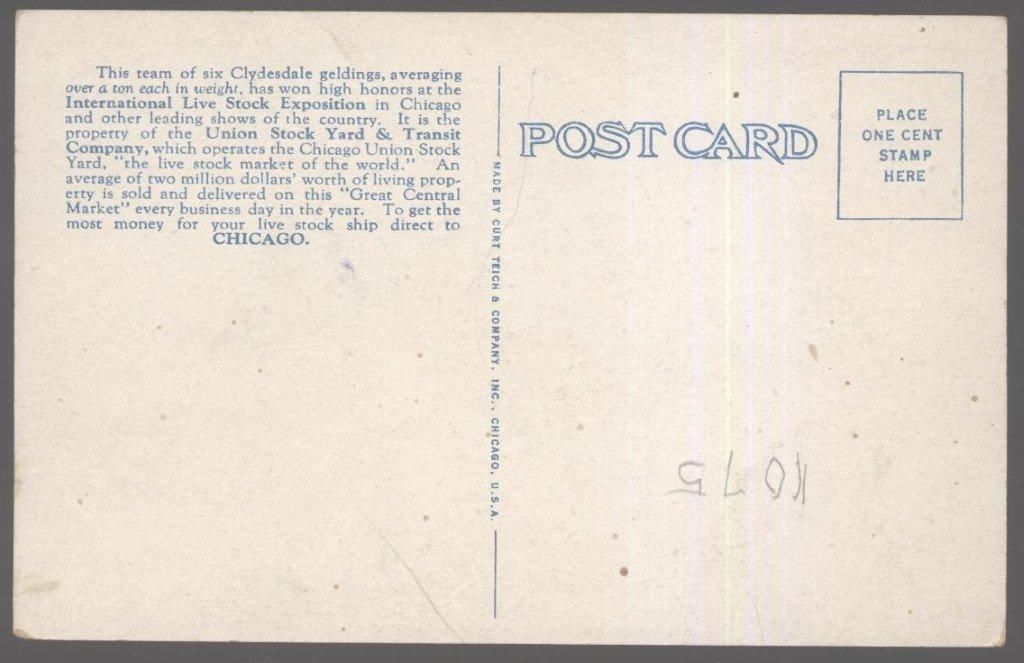
|
| 1930 |
Nov 29 to Dec 6 |
|
" |
|
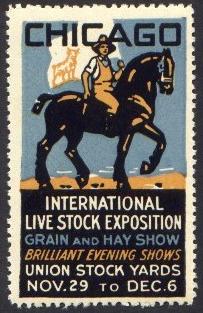
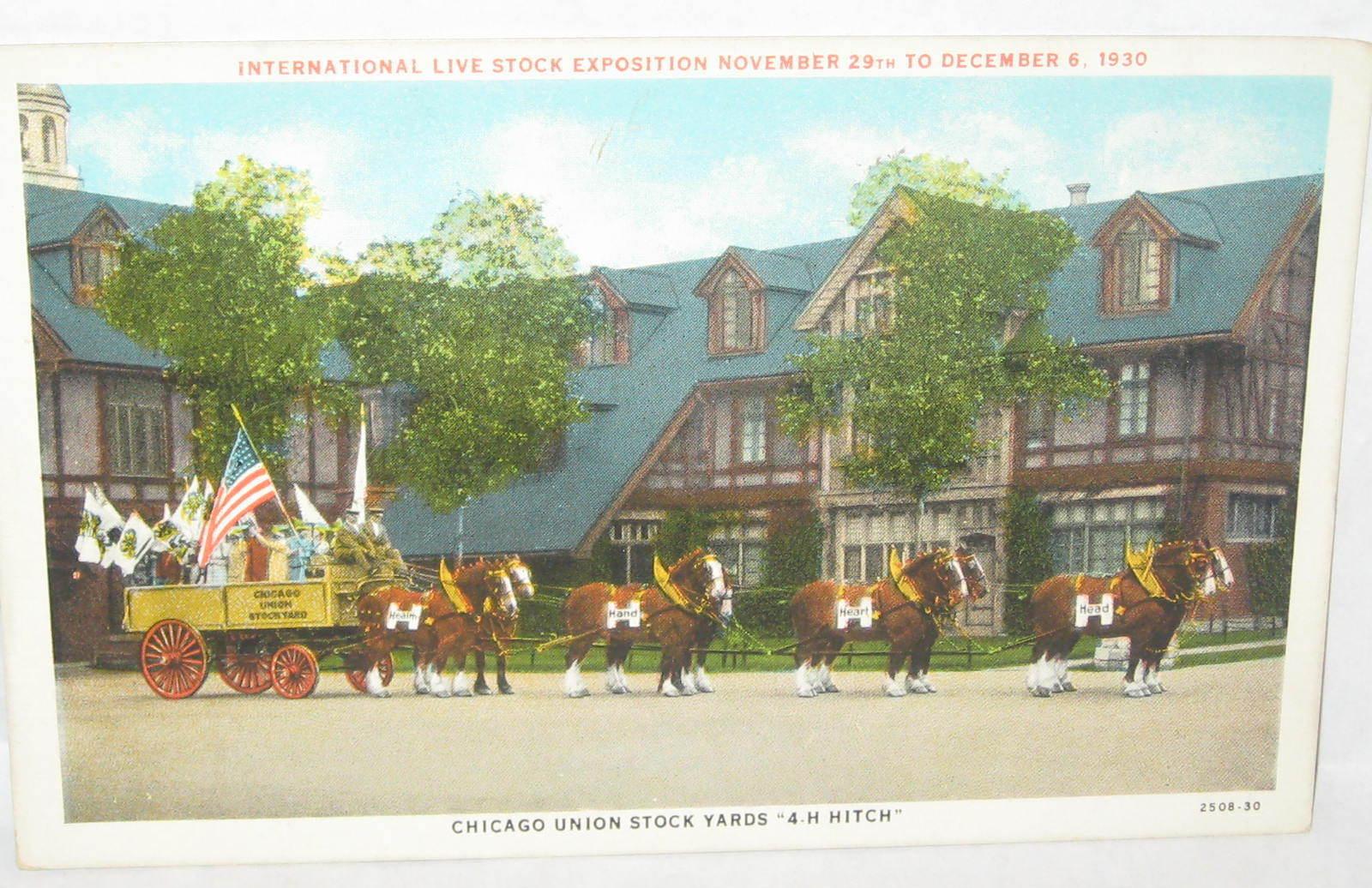
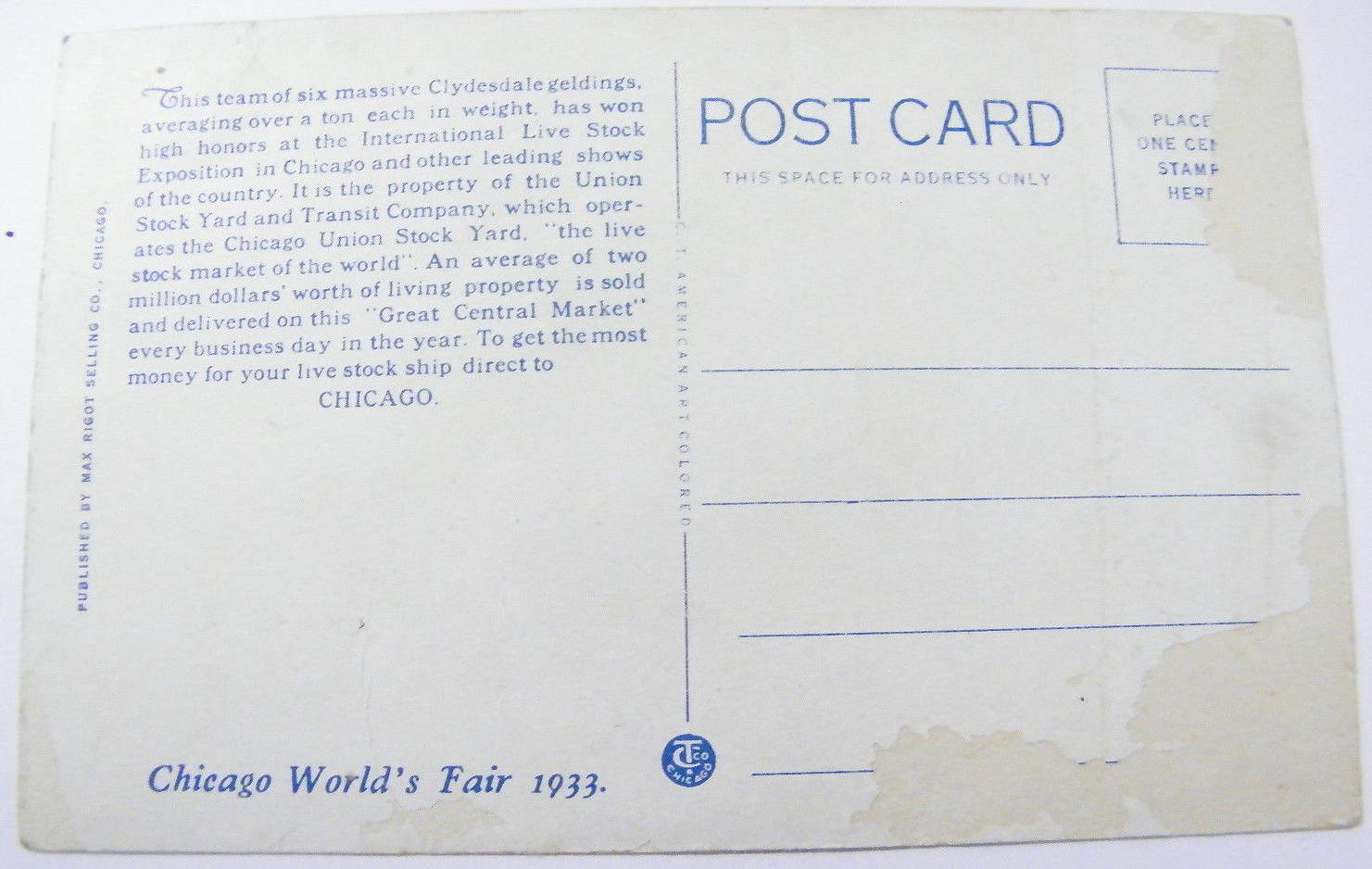
Note the repeated use of the image of the team of Clydesdales on
postcards for the CILSE - they were one of the symbols of the event,
and performed regularly at the show, and throughout the year.
Note the ad for the 1933 Chicago World's Fair, which was still
three years away!
|
| 1931 |
Nov 28 to Dec 5 |
|
" |
|

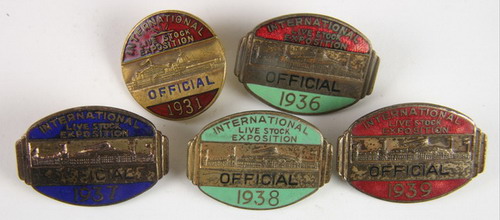
The earliest use I have seen of this pin design is the one shown here,
for 1931. The latest is 1956. I have NOT made and exhaustive search,
so they could have originated ealier, and continued later.
|
| 1932 |
Nov 26 to Dec 3 |
|
" |
|


Ed Pieklo sent the images on the right,
of a 1932 stamp with a
dealer's imprint on the back, and an ad for that dealer.
According to Google, in addition to his activities as a poster
stamp dealer, Frank A. Kiraly (1914-2000) was an aviation
enthusiast and a detective with the Cleveland Police!
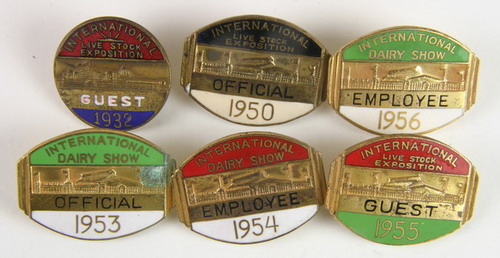

|
| 1933 |
Dec 2 to Dec 9 |
|
" |
|

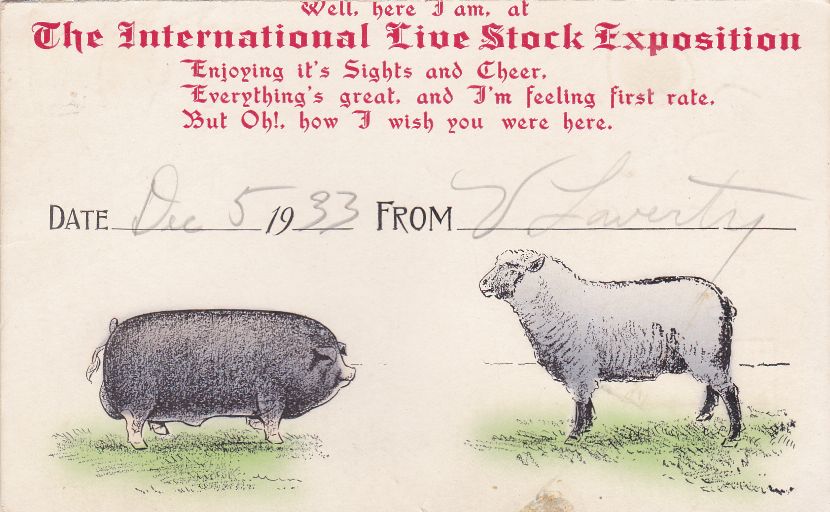
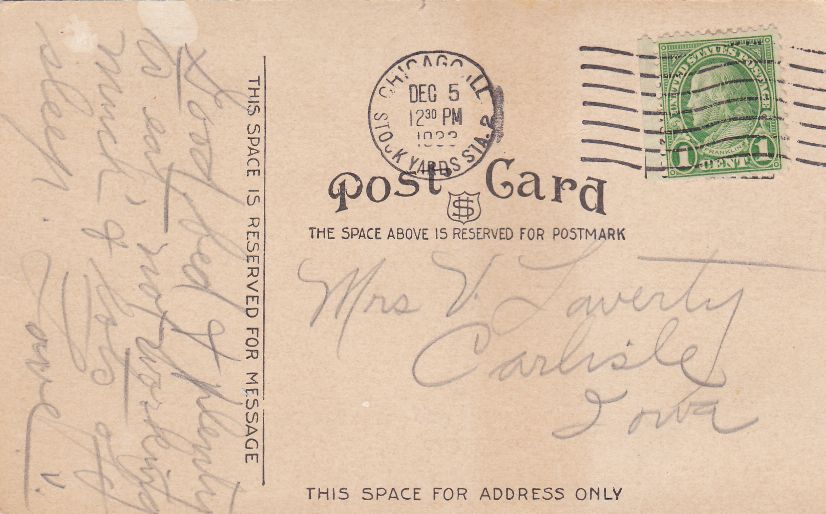
|
| All the following stamps have year dates.
|
| 1934 |
Dec 1 to Dec 9, 1934 |
Year included in date from here on |
black, blue-gray and tan |
Common |
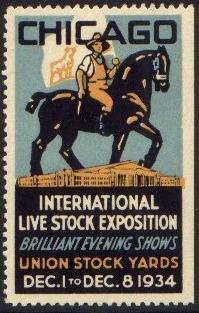
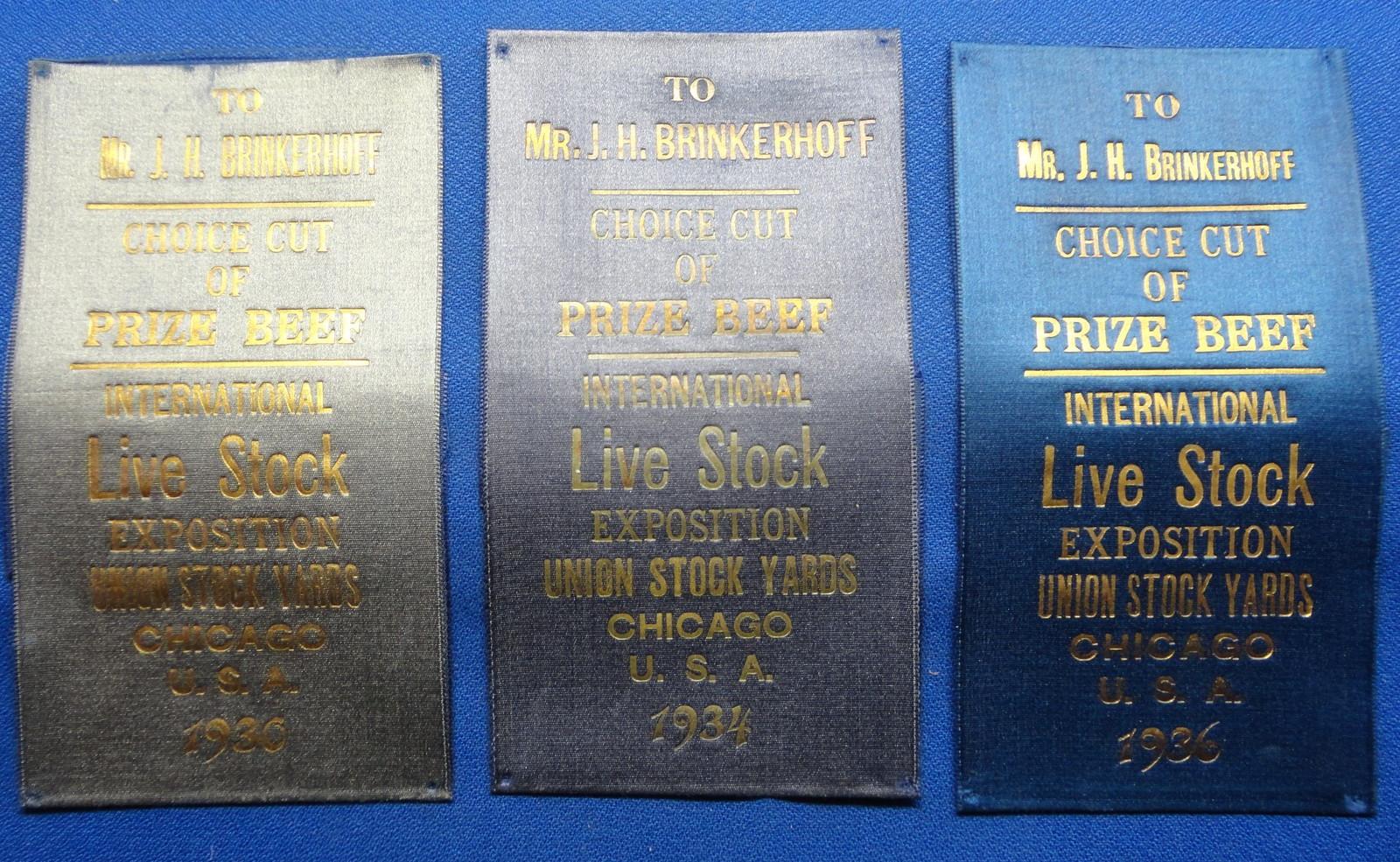
|
| 1935 |
Nov 30 to Dec 7, 1935 |
|
" |
Common
|

|
| 1936 |
Nov 28 to Dec 5, 1936 |
Note image of full sheet - I like to see how stamps were
printed and distributed. |
" |
Common
|



|
| 1937 |
Nov 27 to Dec 4, 1937 |
|
" |
Common
|
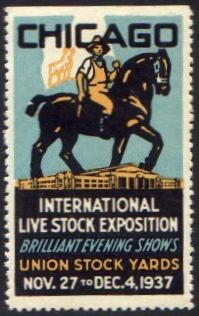
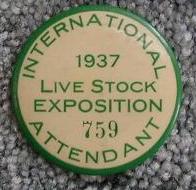
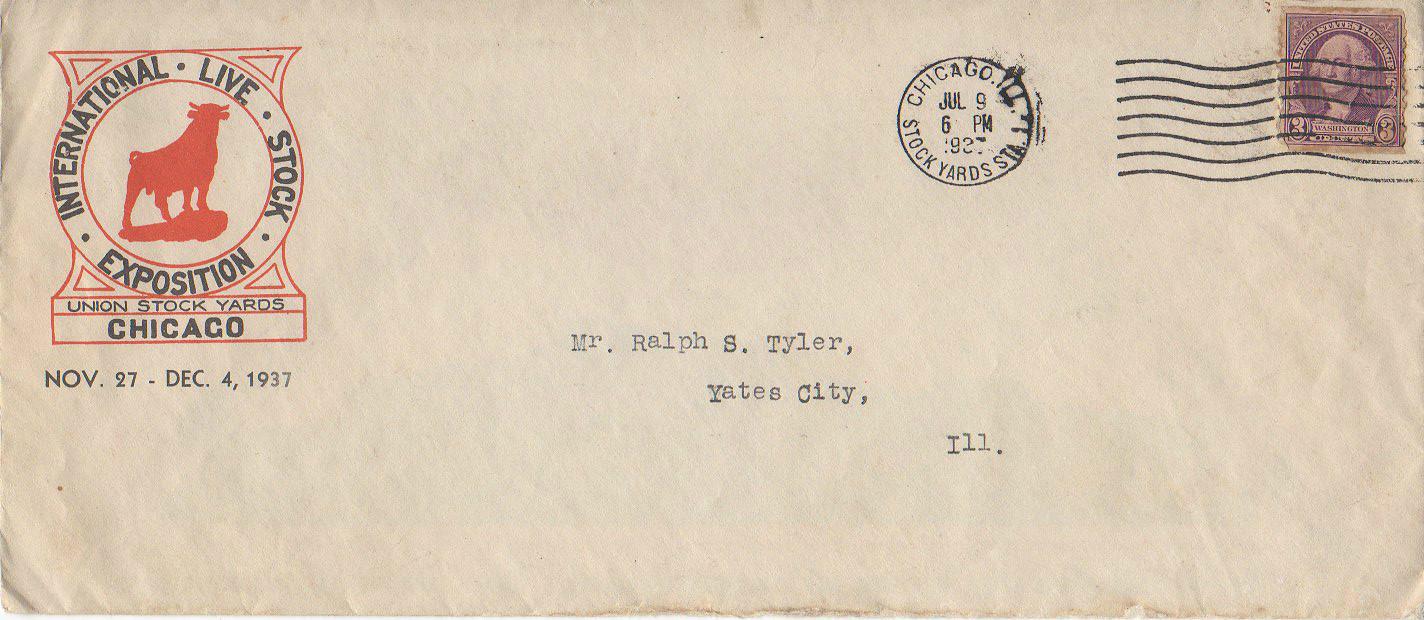
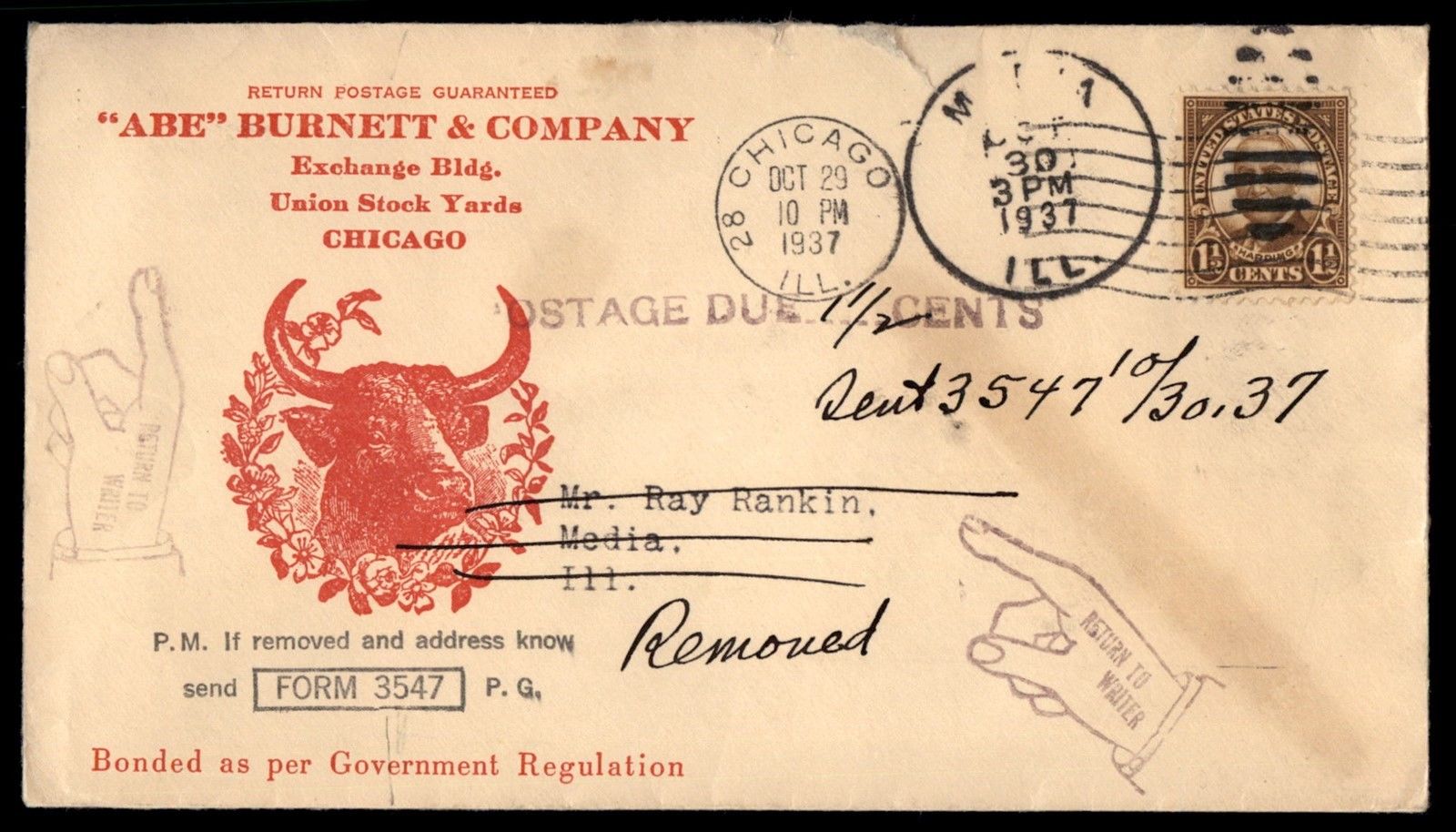

|
| 1938 |
Nov 26 to Dec 3, 1938 |
|
" |
Common
|
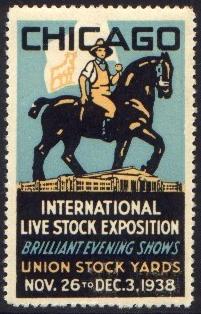
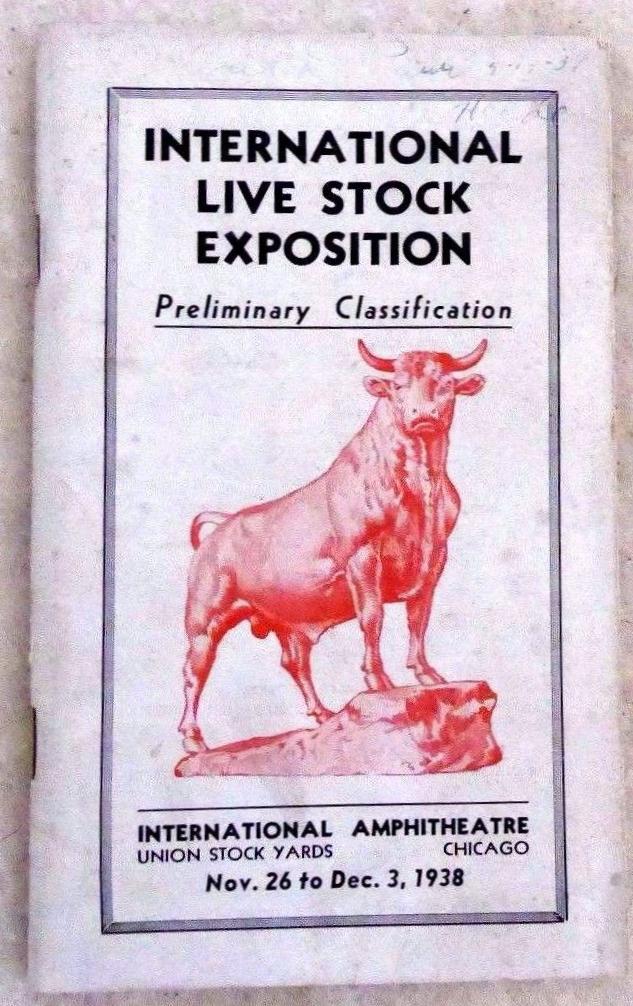
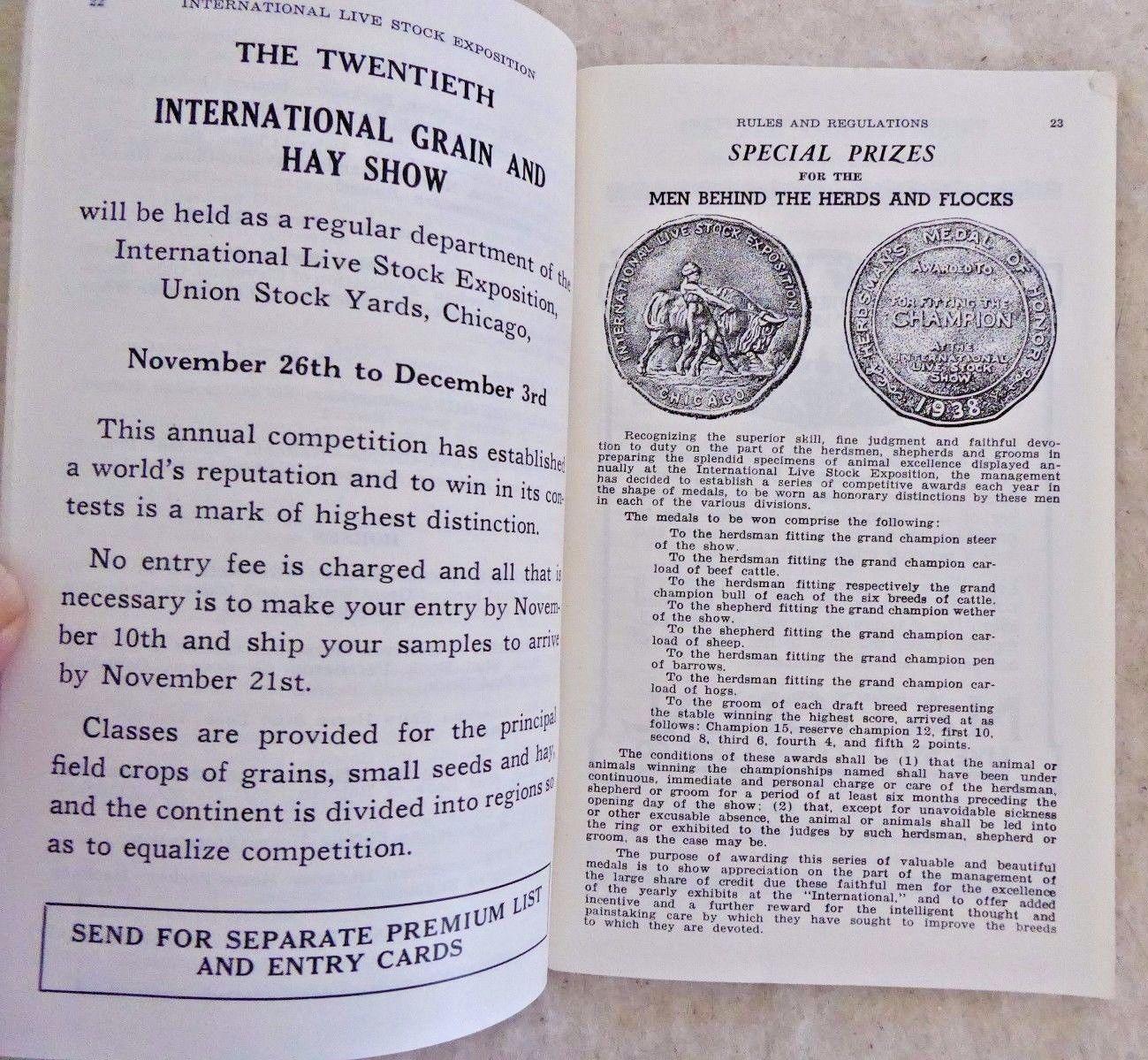
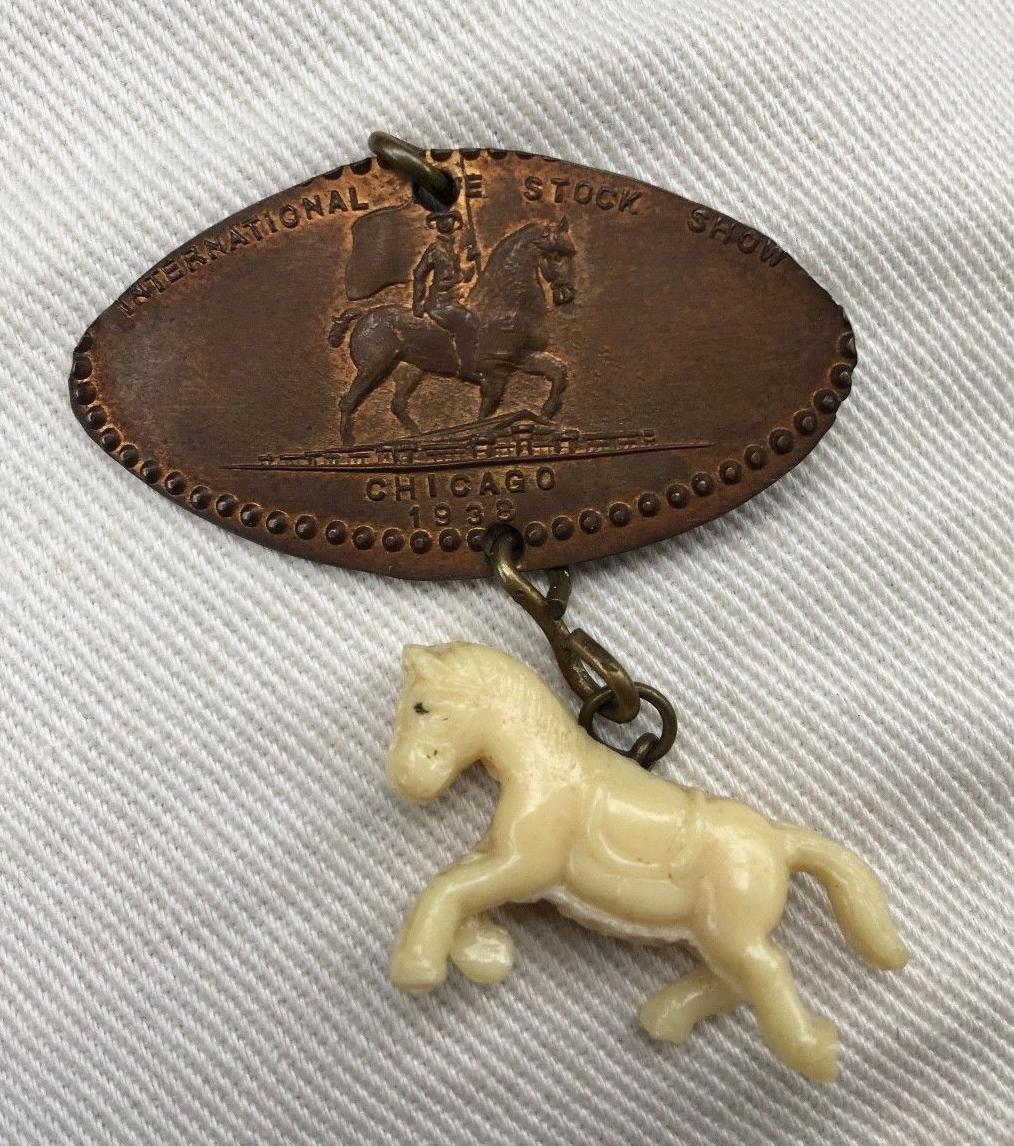

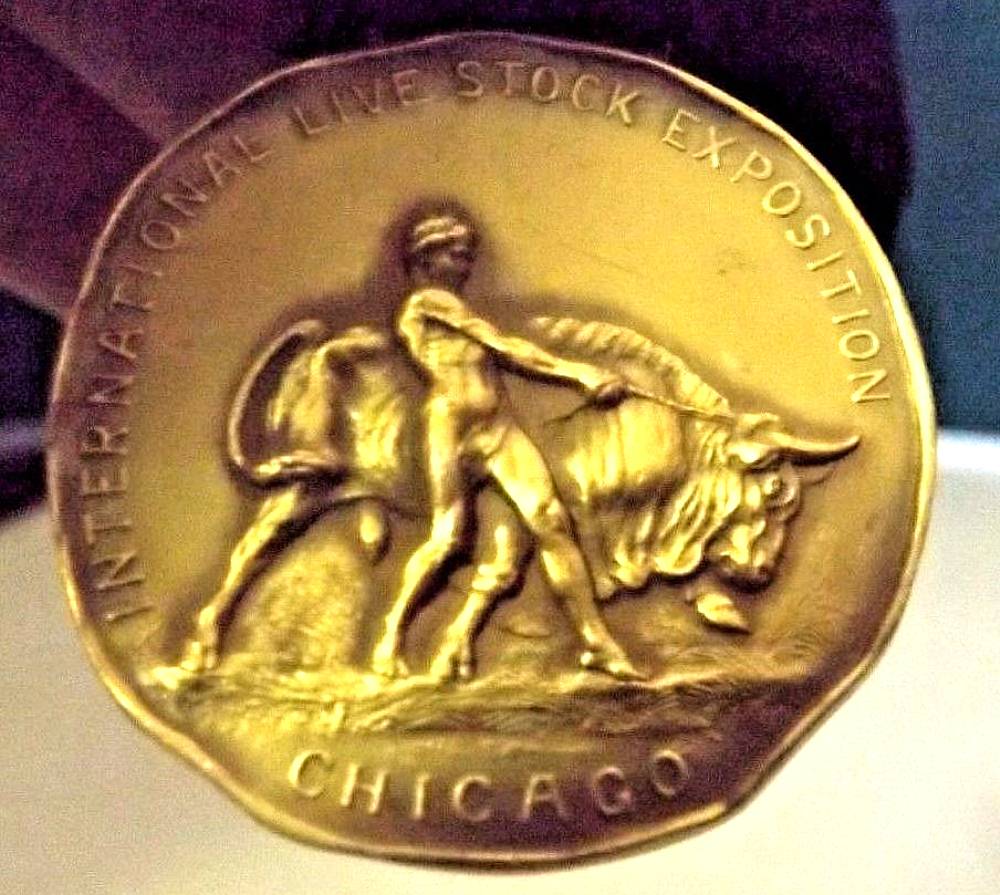
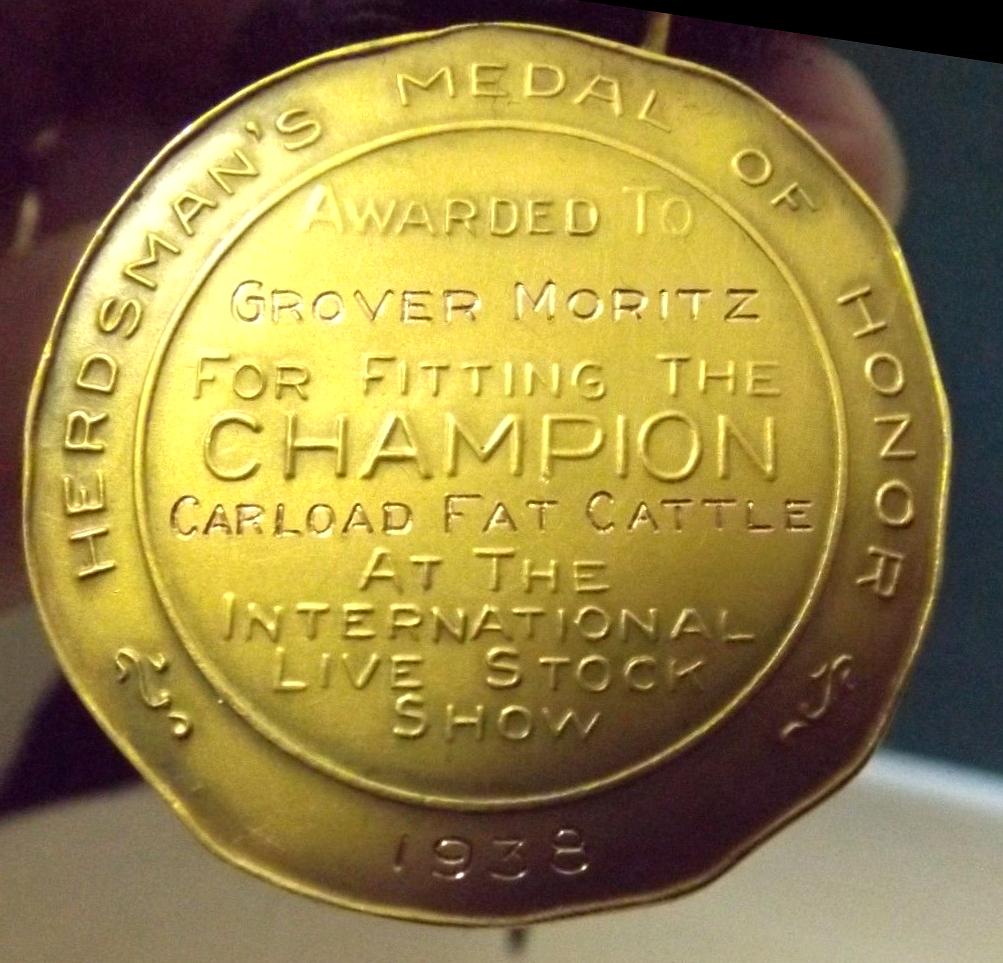
NOTE that the medal on a ribbon at right above is describer
in the catalog at top.
|
| 1939 |
Dec 2 to Dec 9, 1939 |
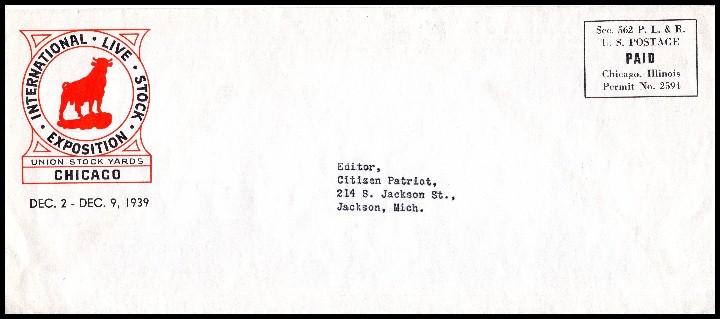
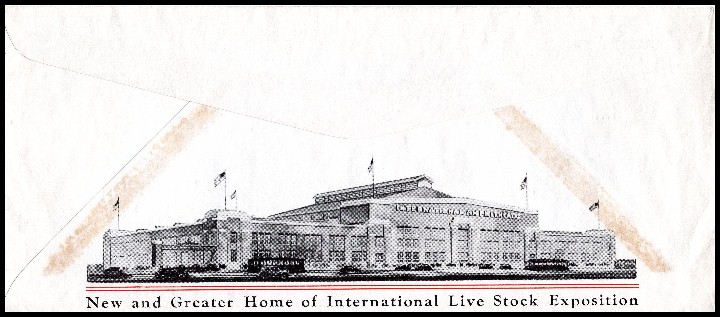
|
" |
Common
|
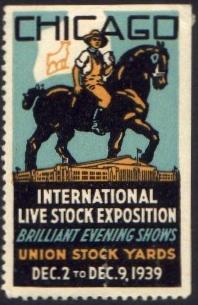
|
| 1940 |
Nov 30 to Dec 7, 1940 |
|
" |
Common |

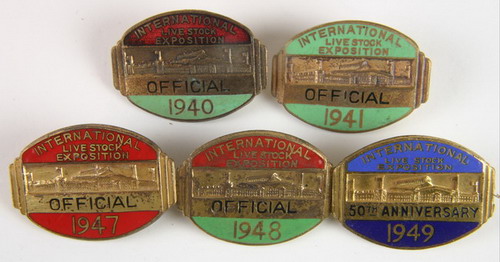

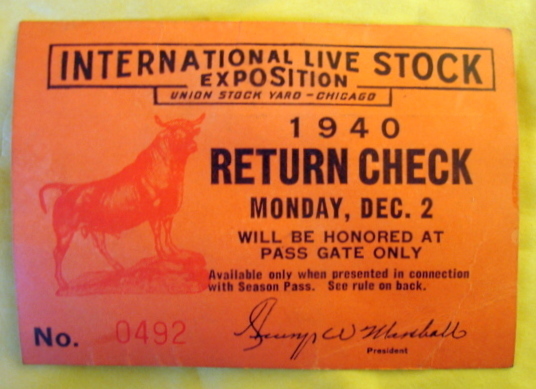
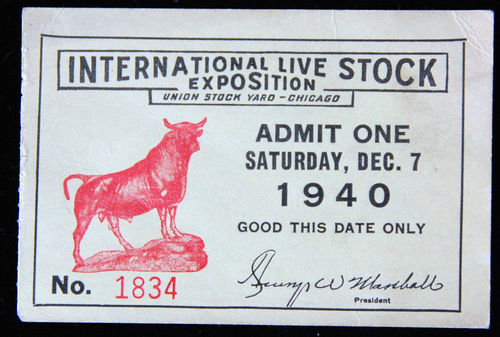
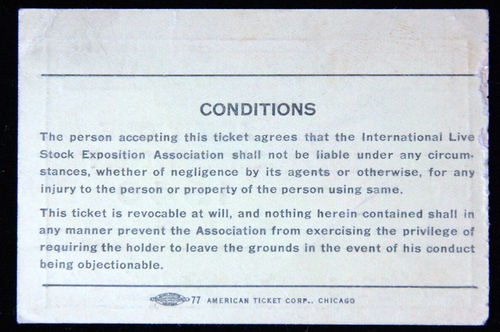
|
| 1941 |
Nov 29 to Dec 6, 1941 |
Note image of full sheet - I like to see how stamps were
printed and distributed. |
" |
Common
|

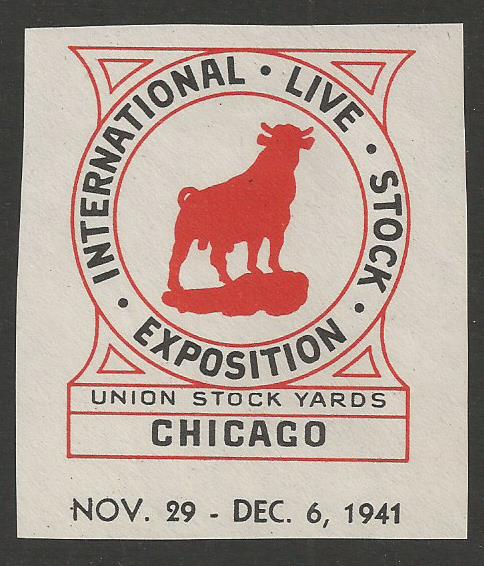
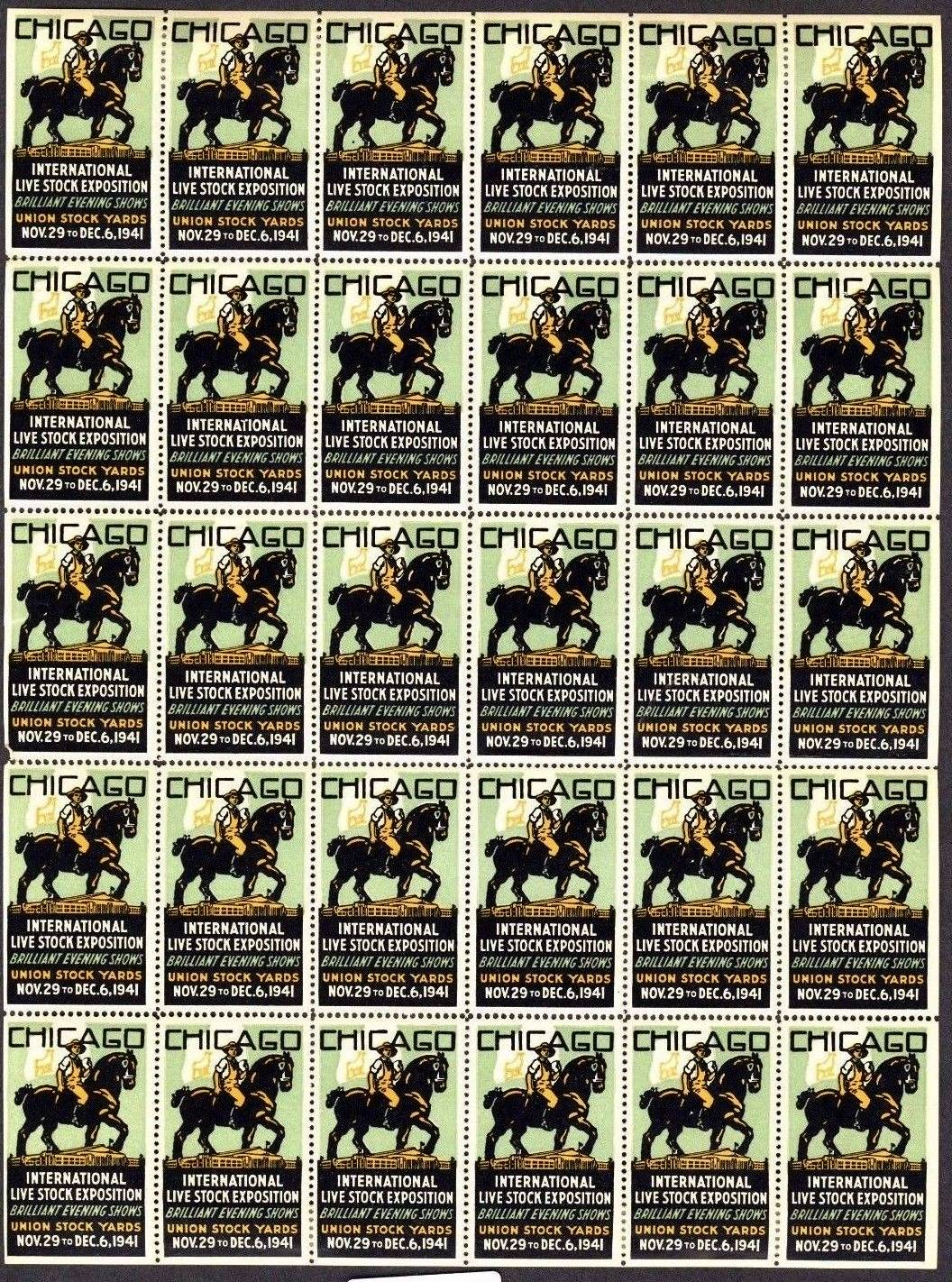
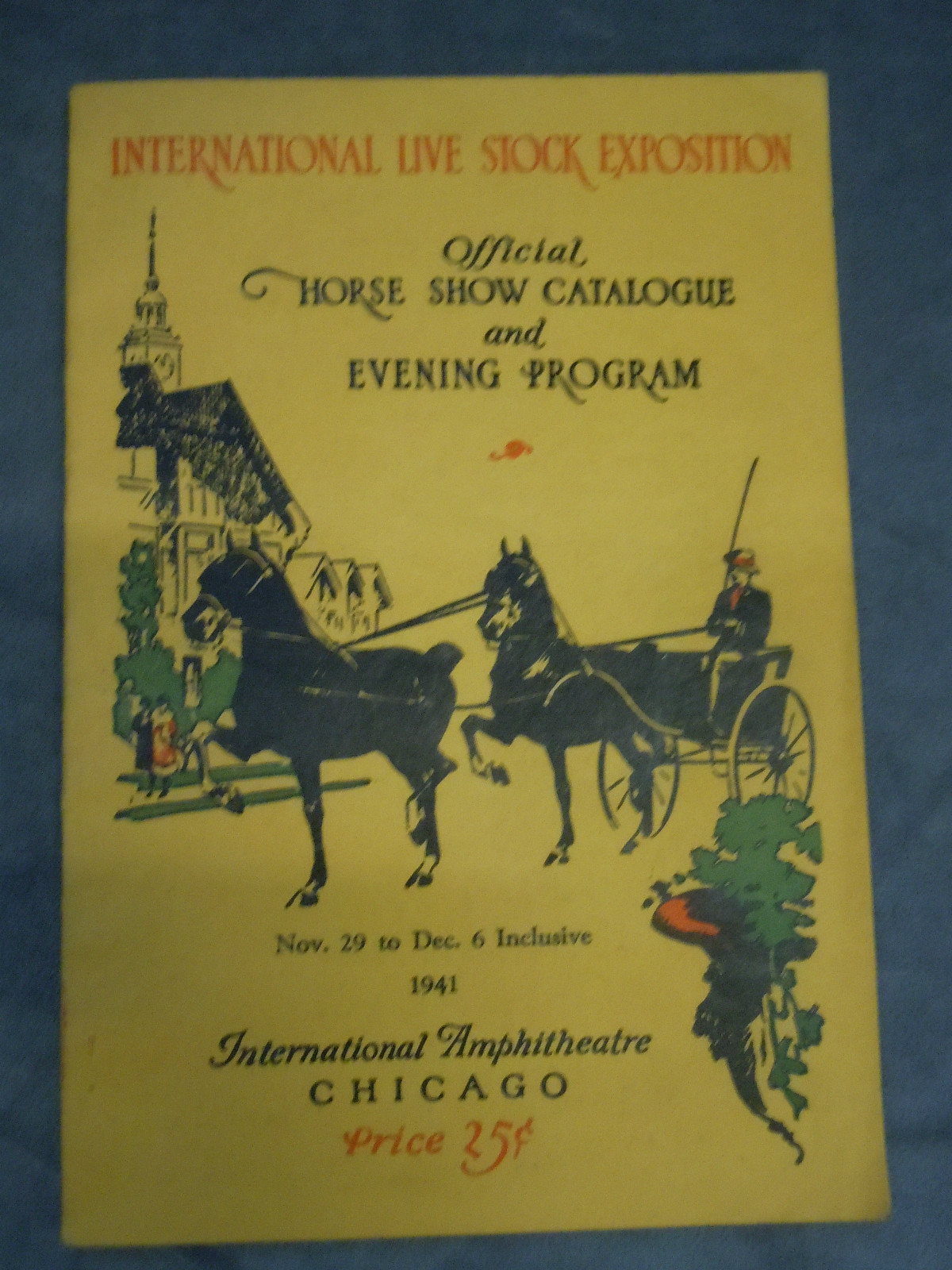
|
| 1942 |
No stamp |
(Show was not held) |
|
|
|
| 1943 |
No stamp |
(Show was not held) |
|
|
|
| 1944 |
No stamp |
(Show was not held) |
|
|
|
| 1945 |
No stamp |
(Show was not held) |
|
|
|
| 1946 |
Nov 30 to Dec 7, 1946 |
|
black, blue-gray and tan |
|
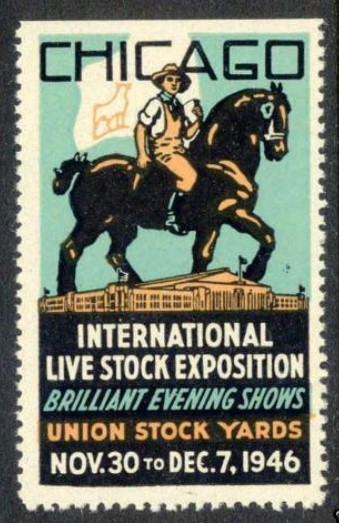


|
| 1947 |
Nov 29 to Dec 6, 1947 |
|
" |
|
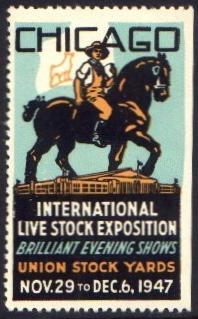
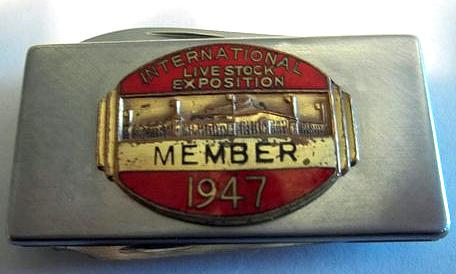
|
| 1948 |
Nov 27 to Dec 4, 1948 |
|
" |
|


|
| 1949
|
Nov 26 to Dec 3, 1949
50th Anniversary!
|
|
" |
|

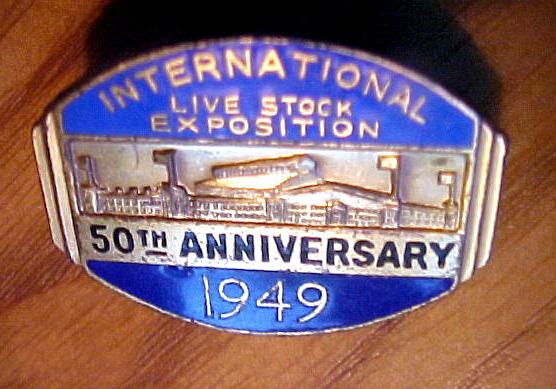
|
| 1950 |
Nov 25 to Dec 2, 1950 |
|
" |
|

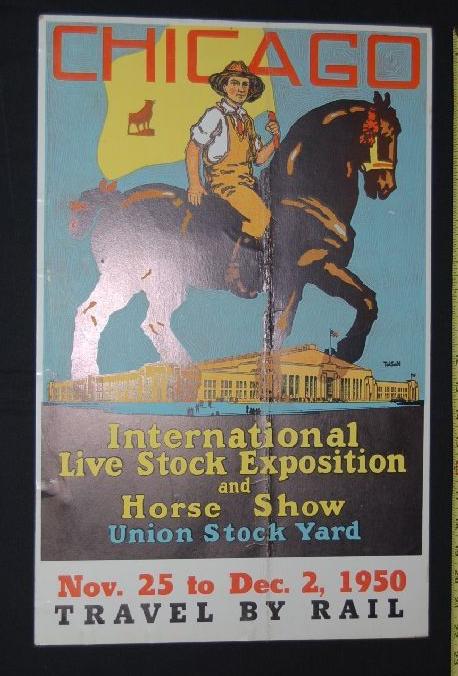
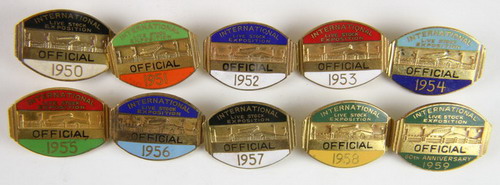
|
| 1951 |
Nov 24 to Dec 1, 1951 |
|
" |
|
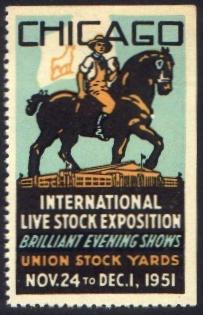
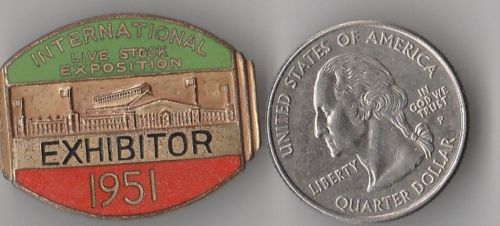
|
| 1952 |
Nov 29 to Dec 6, 1952 |
|
" |
|
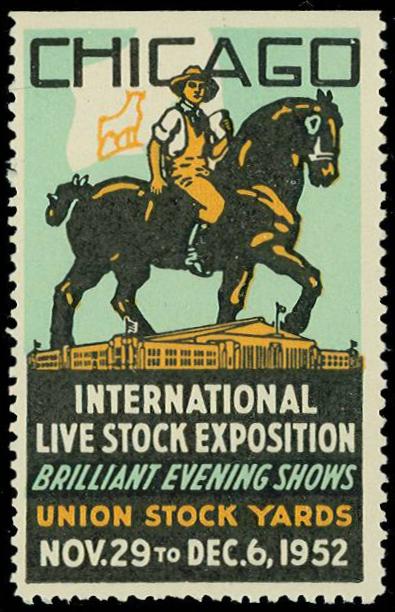
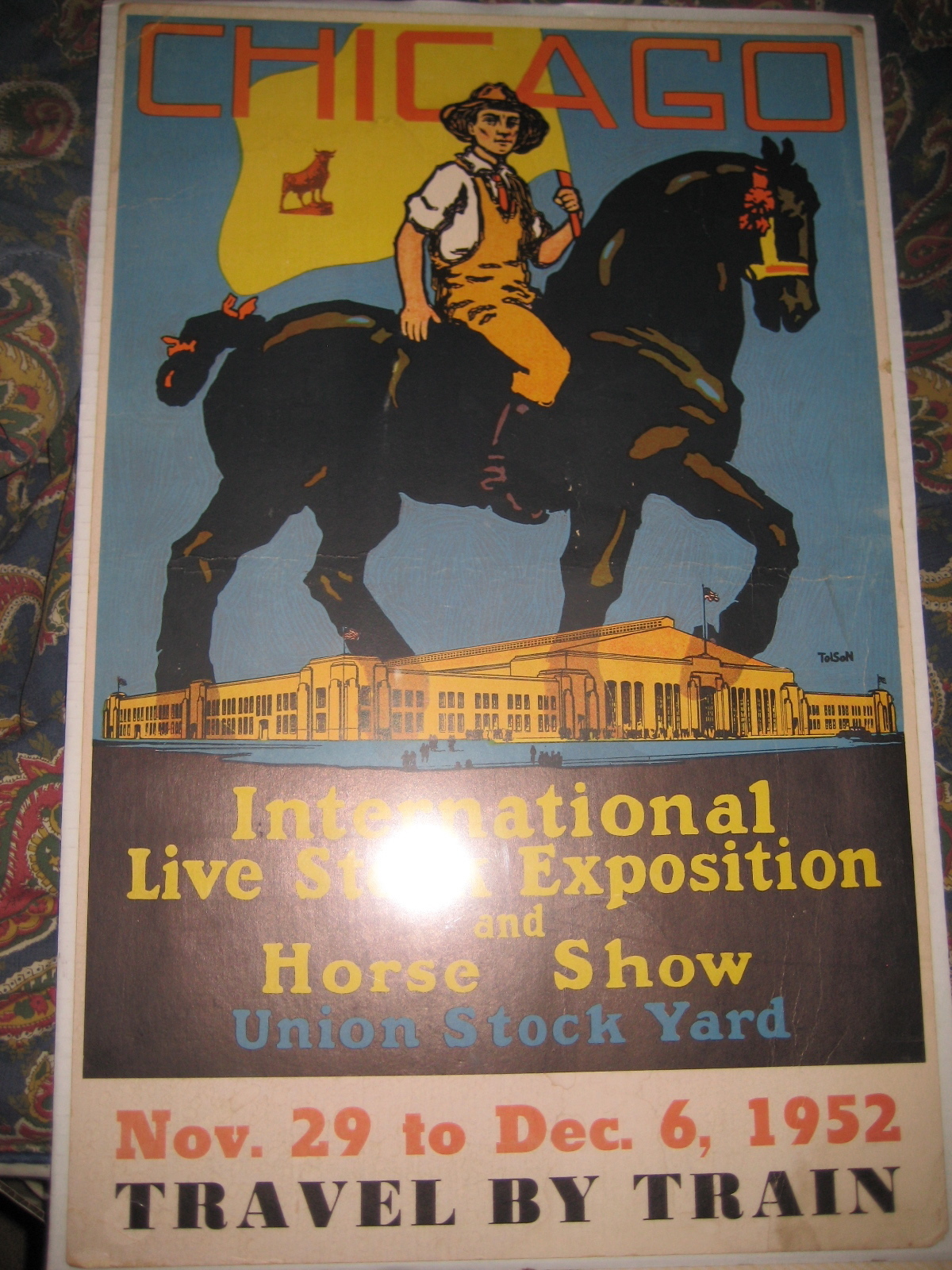
|
| 1953 |
Nov 28 to Dec 5, 1953 |
|
" |
|

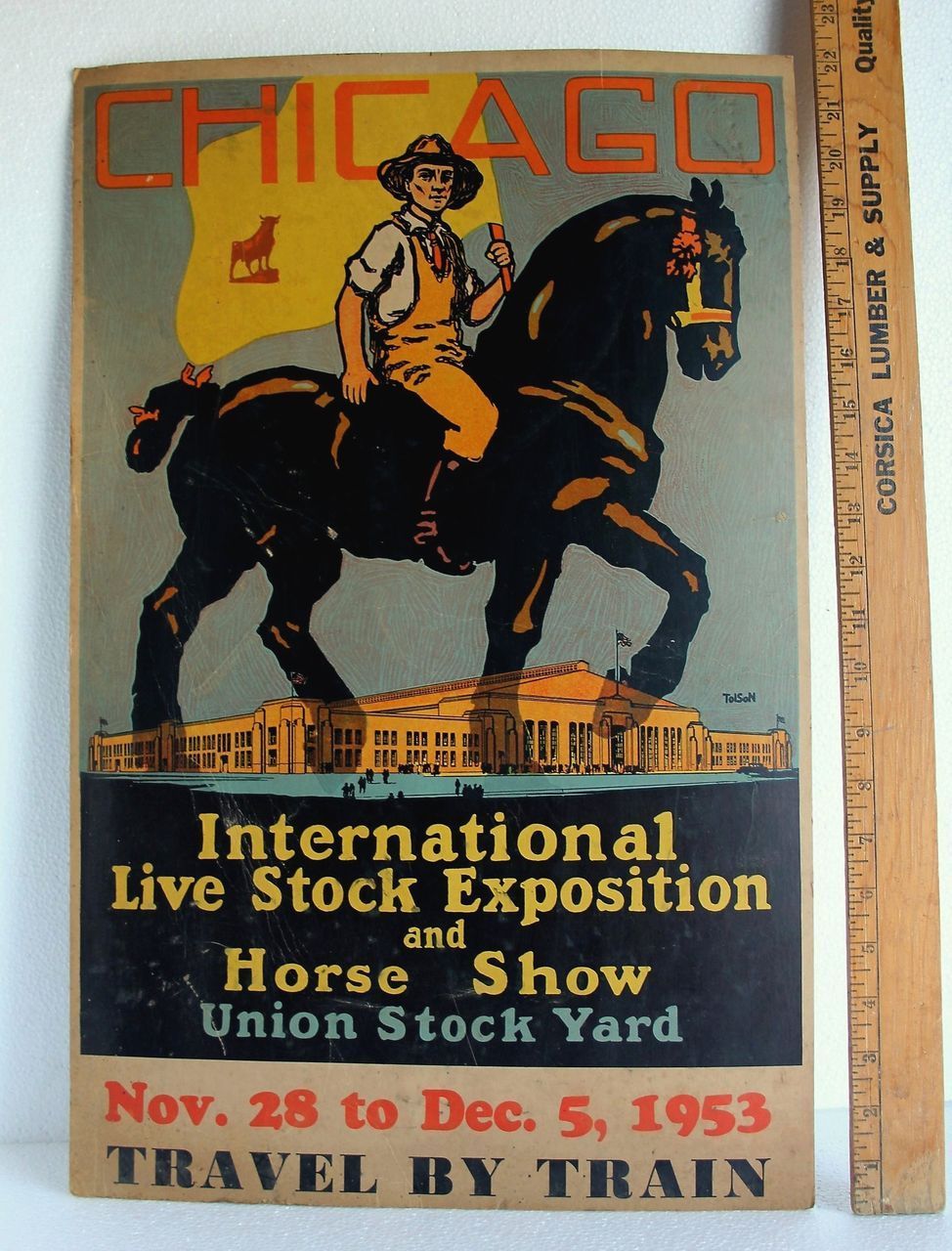
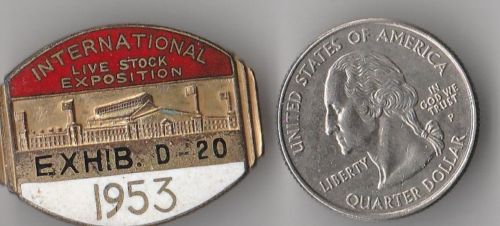
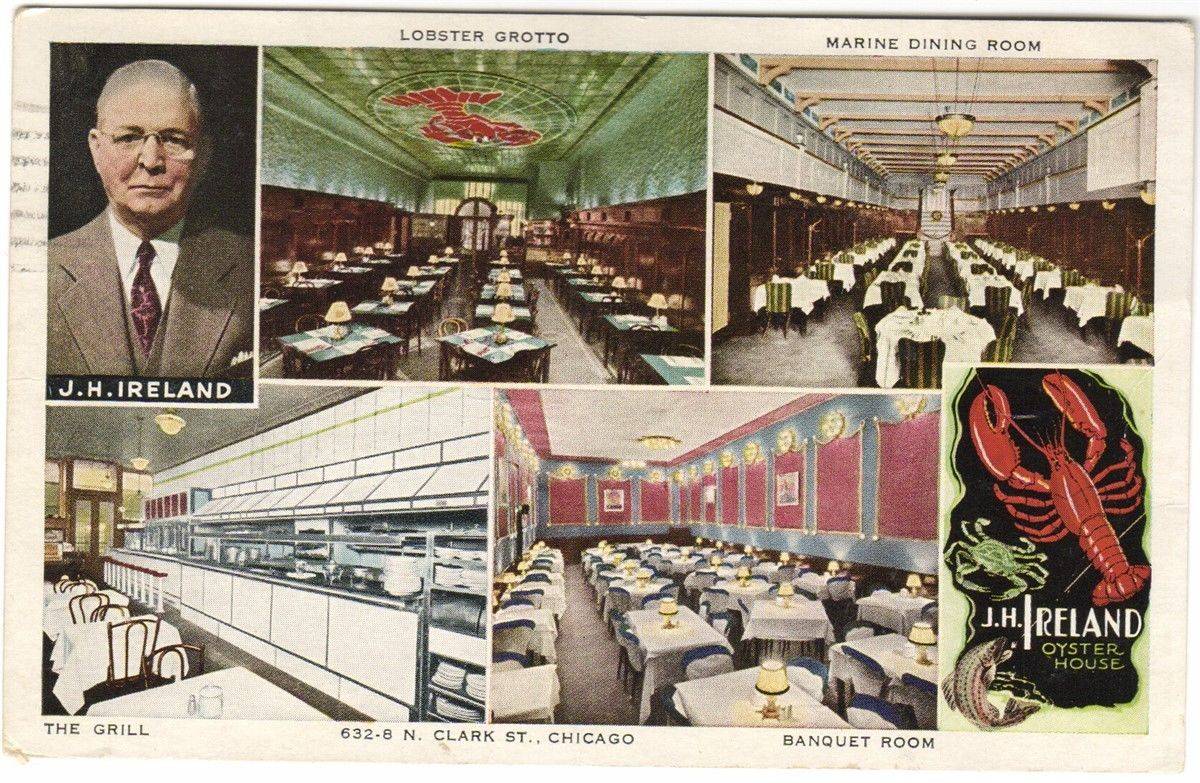
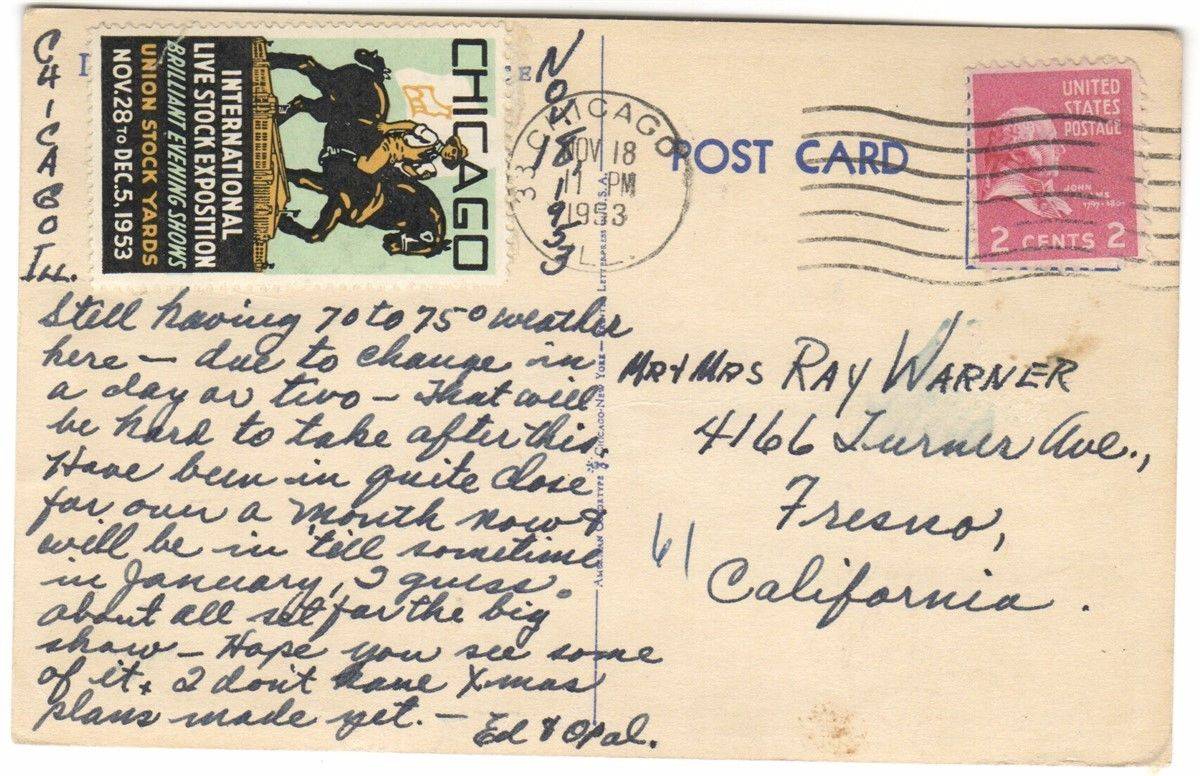
|
| 1954 |
Nov 26 to Dec 4, 1954 |
|
" |
|

|
| 1955 |
Nov 25 to Dec 3, 1955 |
|
" |
|
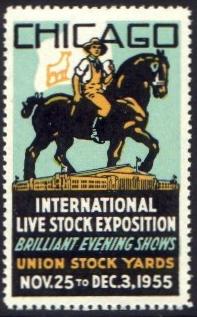
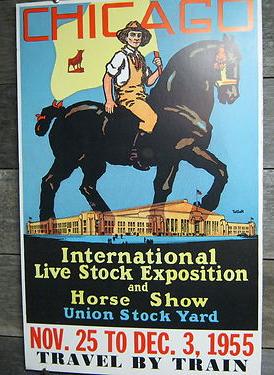
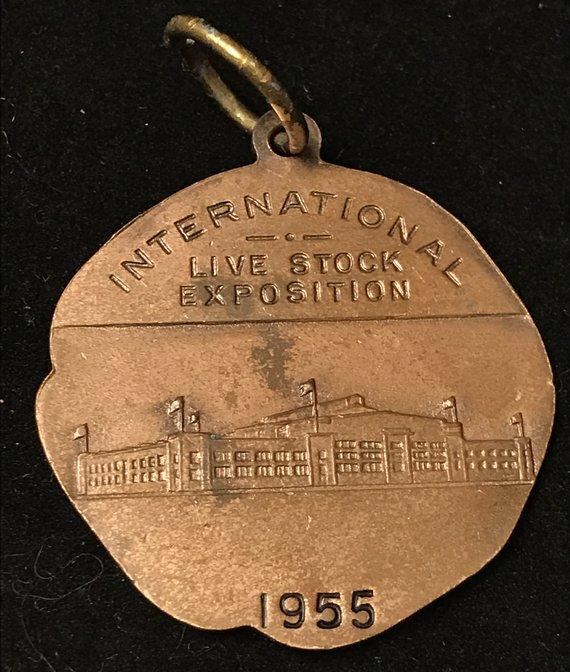
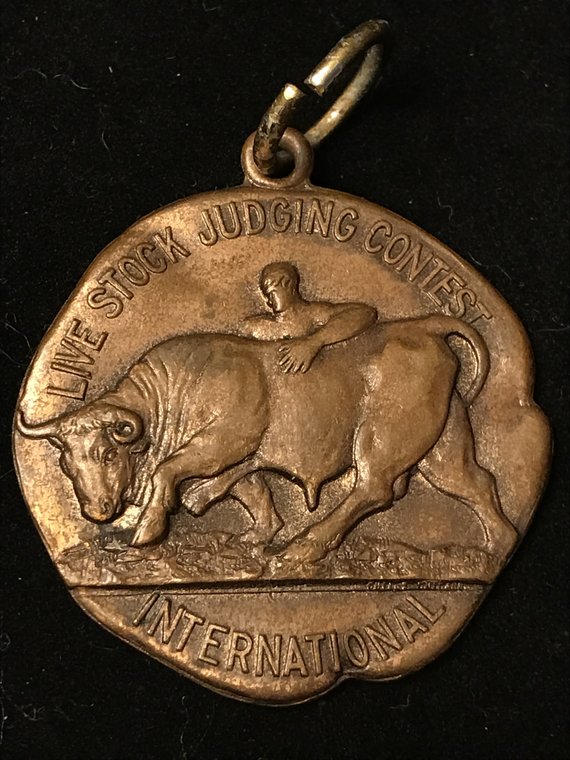

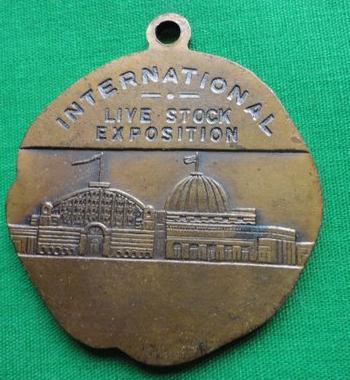
|
| 1956 |
Nov 23 to Dec 1, 1956 |
|
" |
|
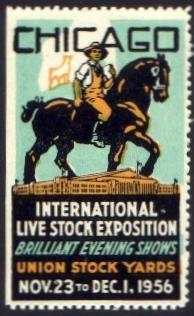
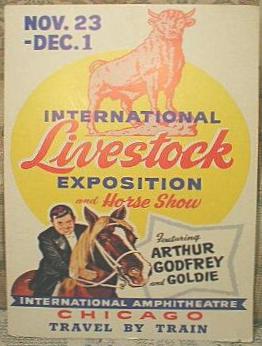


|
| 1957 |
Nov 29 to Dec 7, 1957 |
|
" |
|

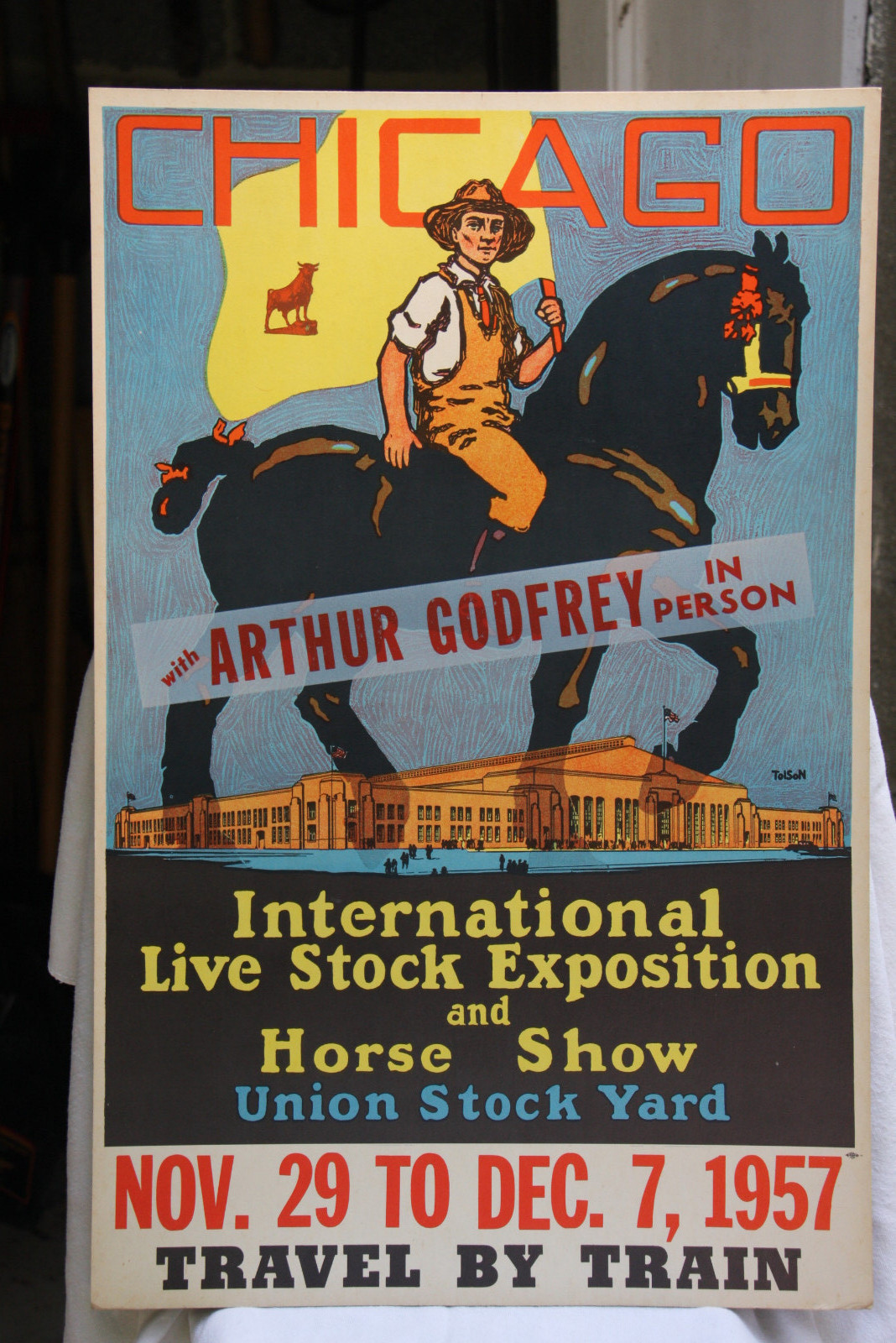
|
| 1958 |
Nov 28 to Dec 6, 1958 |
The outline of the bull on the flag is black now |
" |
|

|
| 1959 |
Nov 27 to Dec 5, 1959 |
|
" |
|
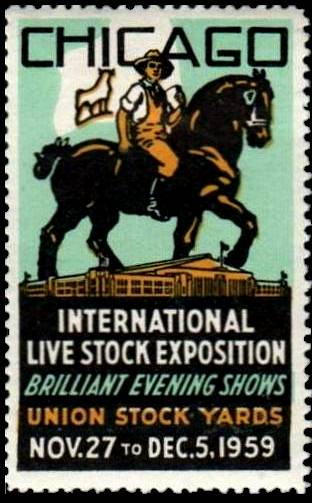
|
|
| 1953 to 1958 |
CHICAGO INTERNATIONAL DAIRY SHOW
|
I found the 1958 stamp on eBay, and Ed Pieklo sent
the other images. Note similarity of the stamps' design
with the ones for the CILSE! Are there others? There is still
a show by that name held annually in Chicago.
--------------
The 1953 stamp looks serrated rather than perfed.
Some variations in the background color.
|
|
|
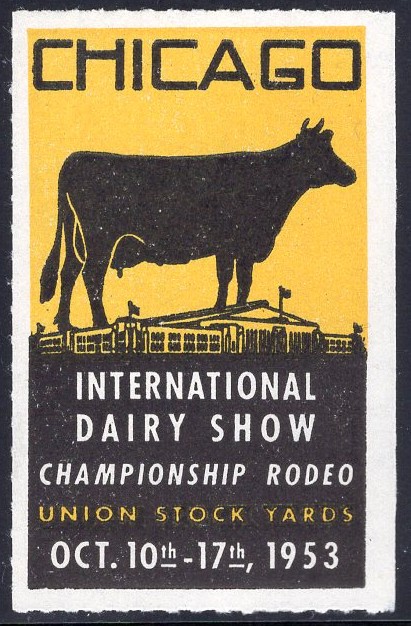

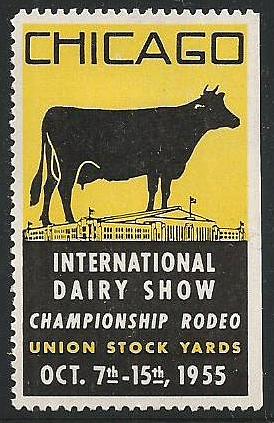


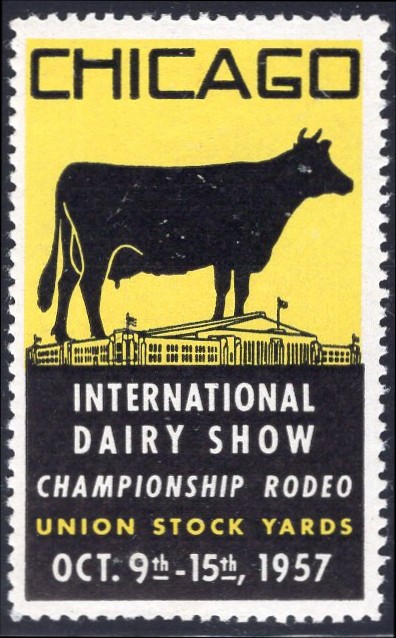
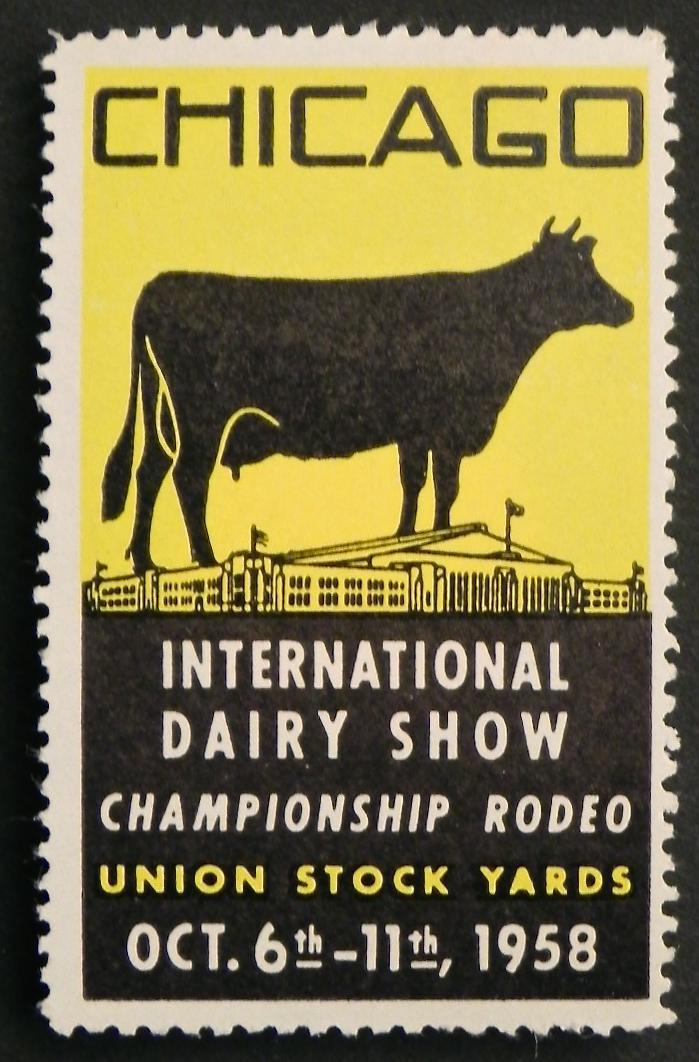
|
History of the Chicago International Live Stock Exposition
From http://www.encyclopedia.chicagohistory.org/pages/30.html
In 1872, New Yorker Franklin J. (F. J.) Berry established a small but successful
horse market at the corner of Michigan Avenue and Monroe Street. By 1886,
Berry was
selling 4,000 horses annually. In
October of 1888, he moved his operation to the Union Stock Yard and by 1895 was
selling 27,000 horses annually. His success was due to his innovative sales
method:
horses brought in by the rail
carload were sold individually in a weekly public auction. This method, which
allowed Illinois to dominate the national horse market from the late 1880s
through
the late 1920s, continued into the
twenty-first century.
The interest in and specialization of the Chicago livestock market continued well
into the twentieth century. Agricultural fairs and specific breed expositions,
including the numerous agricultural
pavilions of the 1893 World's Columbian Exposition, assisted in this promotion.
Beginning in 1878, a "fat stock" show was held annually, always in the fall, in
order to promote and identify the best
examples of purebred species. This evolved into the International Livestock
Exposition in 1900 and continued on an annual basis until 1975. J. H. Sanders,
founder of the Breeder's Gazette in 1881, and
son Alvin worked closely with the various large breeders and individual
breeders'
associations to create this uniquely large, very successful market and
exposition.
From http://www.lib.iastate.edu/spcl/collections/agri/ag10.html
(link no longer active)
The International Live Stock Exposition was held in Chicago, Illinois, from
1900 to
1975 each year after
Thanksgiving. Because of quarantine regulations no shows were held in 1914-1915
(major outbreak of foot and mouth disease),
nor were any held during the World War II years 1942-1945. The exposition was
supported financially by the Union
Stockyard and Transit Company and was held in an amphitheater at the Stockyard.
Operations were managed by an association of individuals active in the livestock
industry. The largest such show in the
world, the exposition attracted an international audience to view prize-winning
swine, cattle, sheep, draft horses, and poultry. Judging events were held
during the
day, and horse shows provided
evening entertainment. Each year, in conjunction with the exposition, a new oil
portrait of a leader in the livestock industry was hung in the Saddle and
Sirloin
Club. The club was located at the
Stockyard Inn, adjacent to the exposition's ampitheater.
|
























































































































































